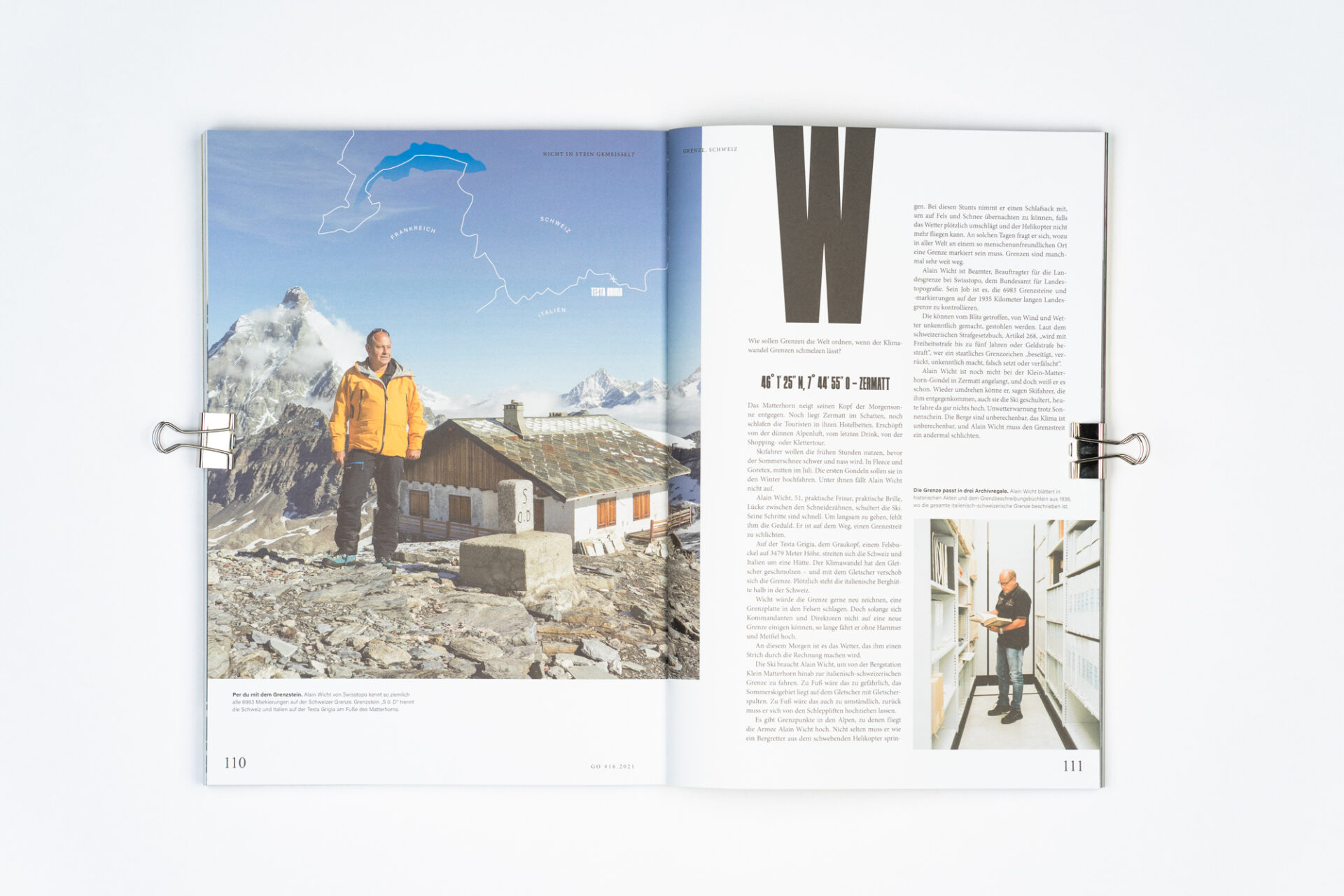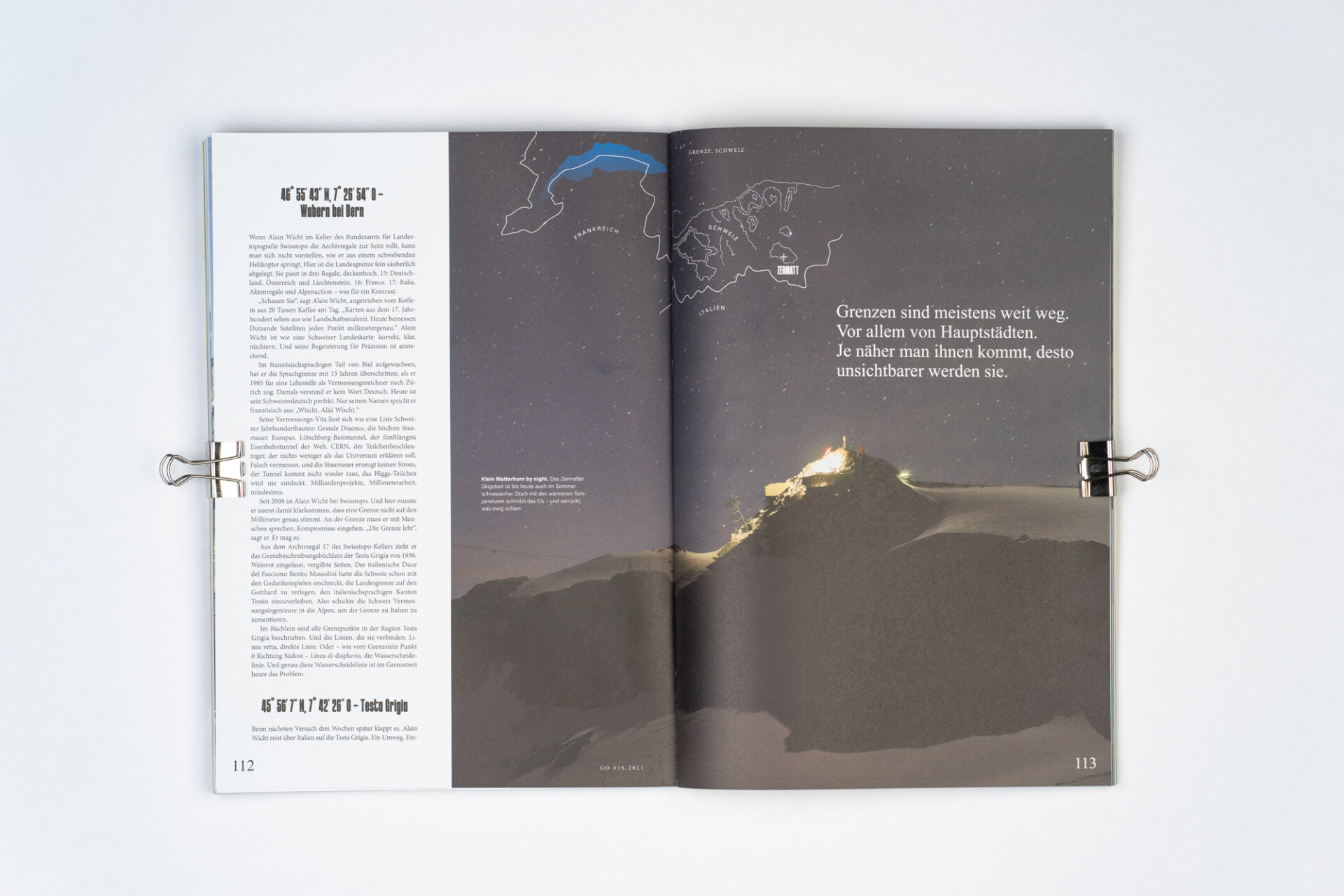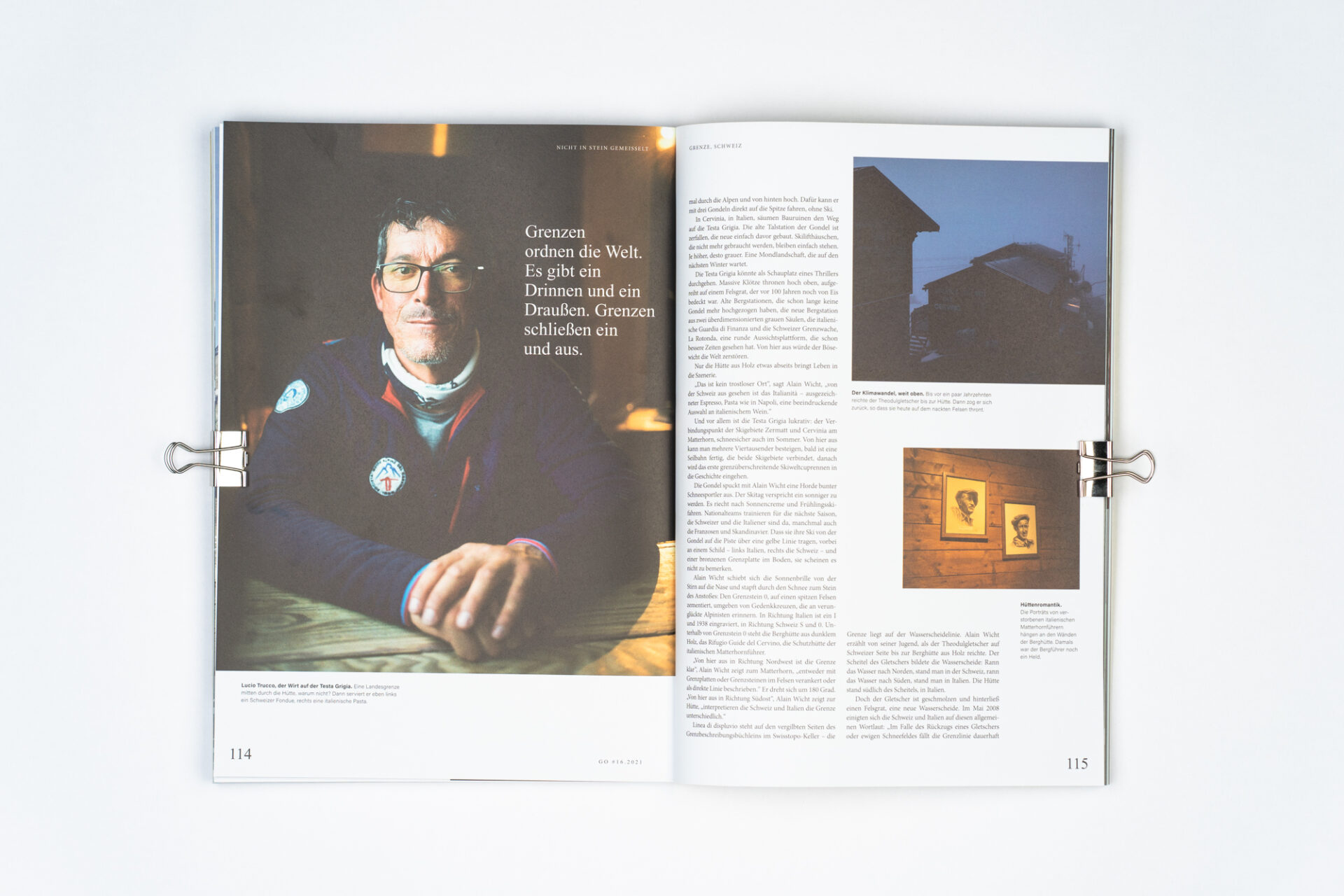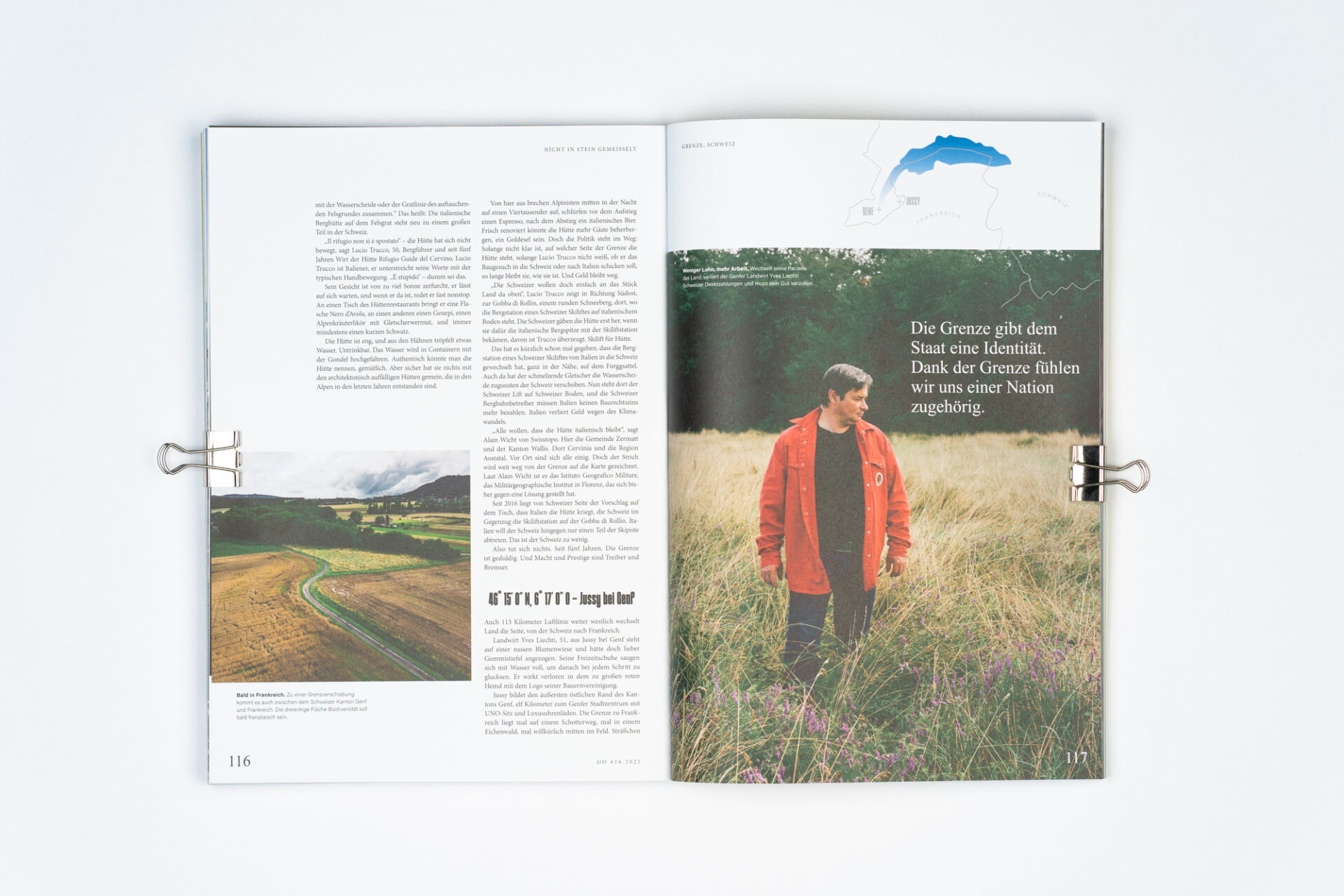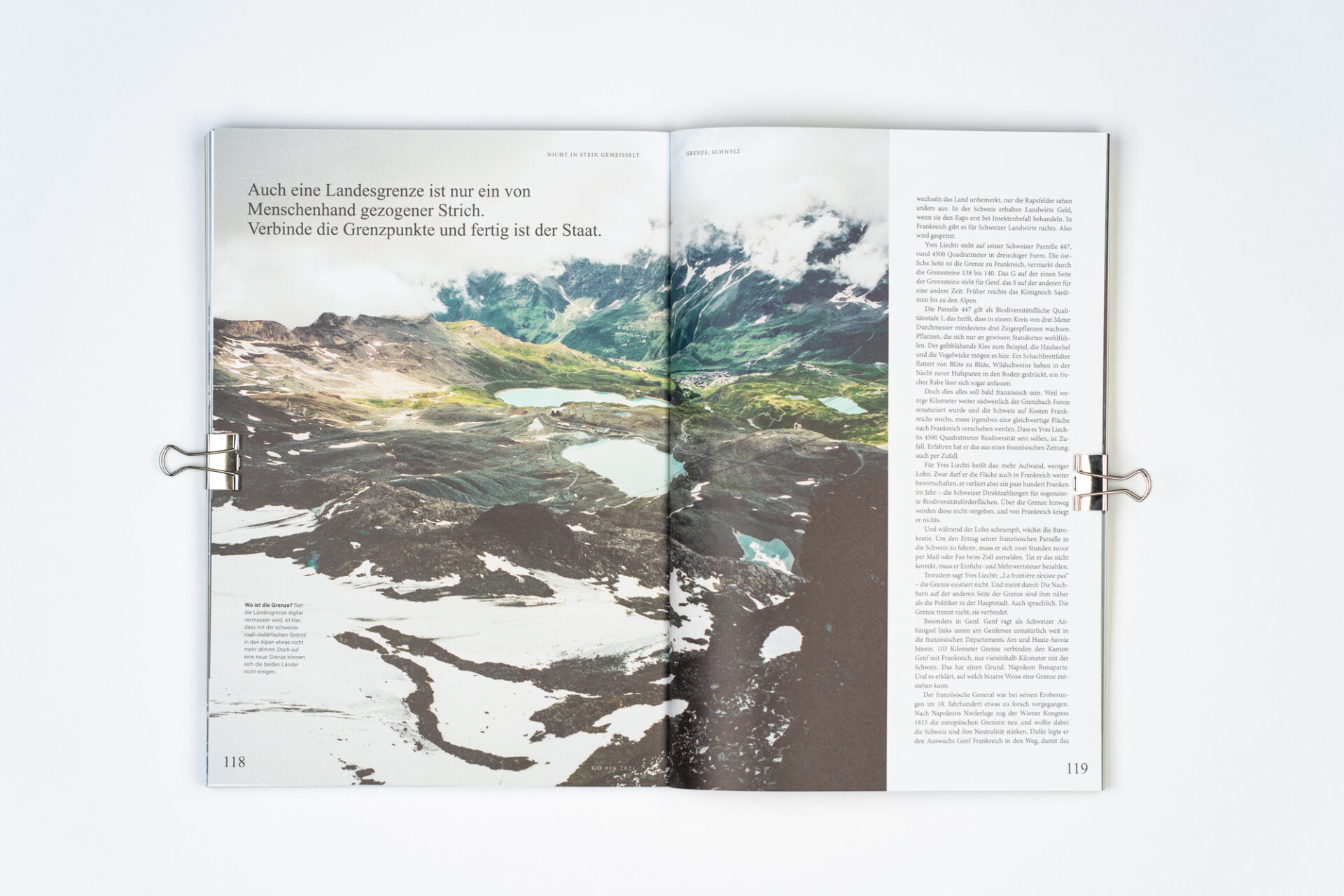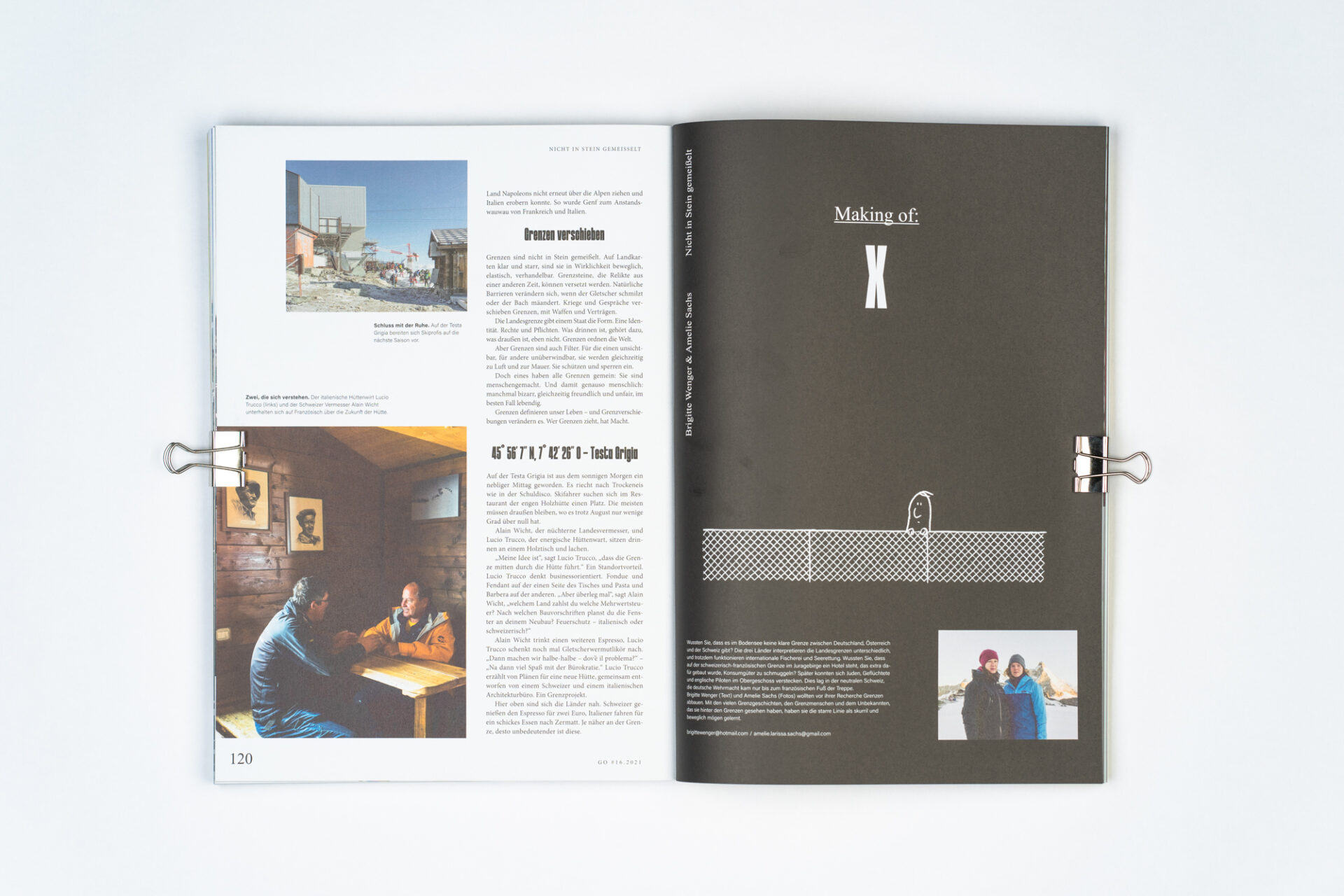Global warming is not only melting glaciers. It is also shifting borders. In the Alps, the watershed forms the „natural“ national border – in the north, the water flows to Switzerland, in the south to Italy. On Testa Grigia (3480m), the watershed has shifted 150 meters in recent years due to a melting glacier near the Matterhorn. As a result, the Italian hut Rifugio Guide del Cervino is now mostly on Swiss territory.
Alain Wicht is the man in Switzerland for border shifts. His work route is often inconvenient, the border points remote – but cooperation with neighboring countries is usually uncomplicated. That’s not the case on Testa Grigia: the Zermatt-Cervinia tourist region is a lucrative year-round ski area, the serviced hut a goldmine. Switzerland and Italy agree that the Refugio should remain Italian, but WHERE precisely the new, artificial border should run is controversial between the countries. The lack of clarity is a problem for the hut: it would have to be renovated, but where to put the building permit?
The story „Not set in stone“ follows Alain Wicht to the Alps and his workplace at the Federal Office of Topography in Bern. Furthermore, it sheds light on another place where borders are shifting in Switzerland: the region around Lake Geneva, where a farmer has to cede his land to France because of the renaturation of the river Foron.
The project questions the construct of fixed borders and shows what effects border shifts have on those living in these places. It was developed in cooperation with the Swiss journalist Brigitte Wenger, who wrote a reportage on the shifting of borders in Switzerland due to climate change or human intervention.
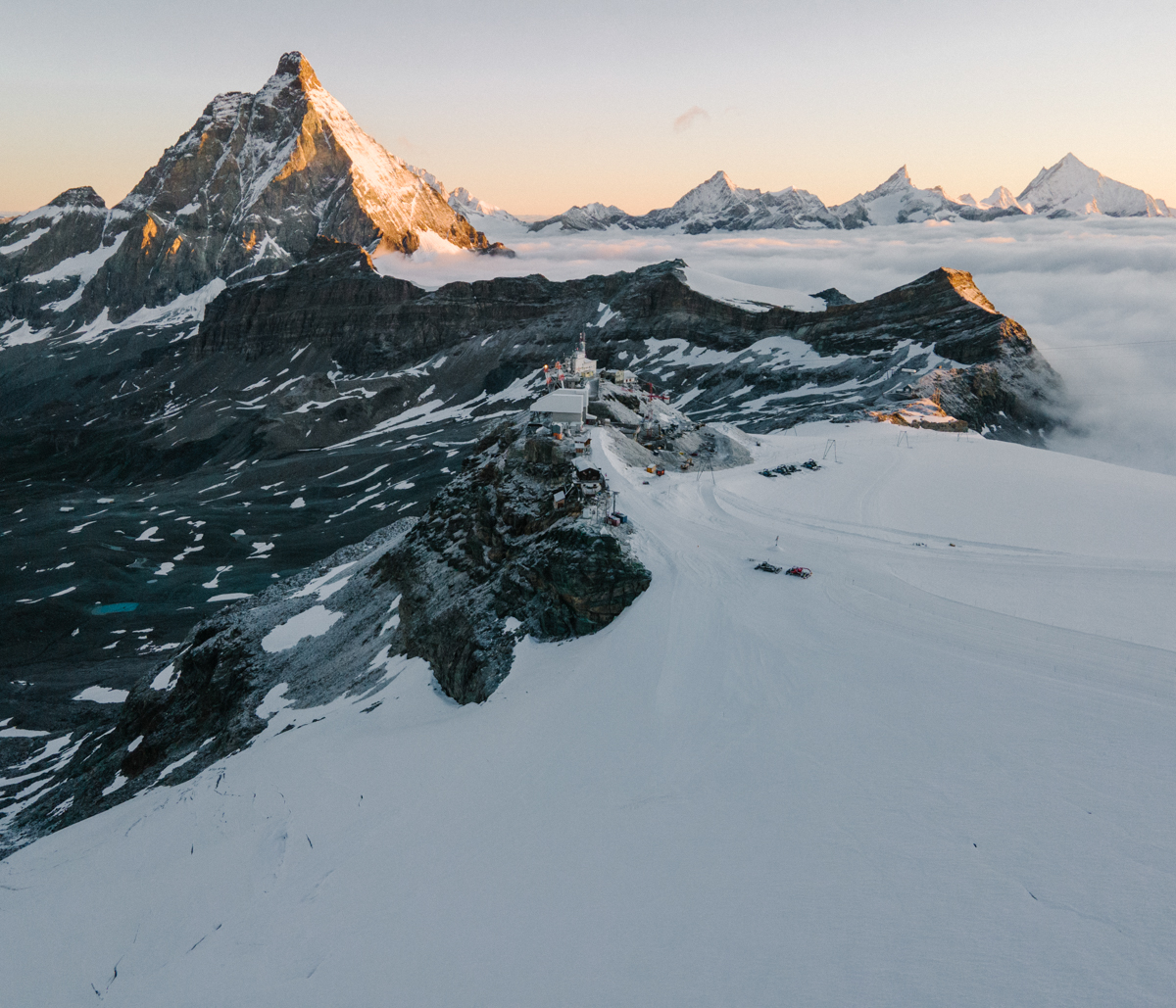 View on the Testa Grigia, which is located in the nearby Matterhorn at an altitude of 3500m. Up here in the Alps runs the border between Italy and Switzerland. Testa Grigia is the scene of the conflict concerning the redefinition of the national border between Italy and Switzerland, shifting towards Switzerland due to the melting of the Theodul Glacier.
View on the Testa Grigia, which is located in the nearby Matterhorn at an altitude of 3500m. Up here in the Alps runs the border between Italy and Switzerland. Testa Grigia is the scene of the conflict concerning the redefinition of the national border between Italy and Switzerland, shifting towards Switzerland due to the melting of the Theodul Glacier. 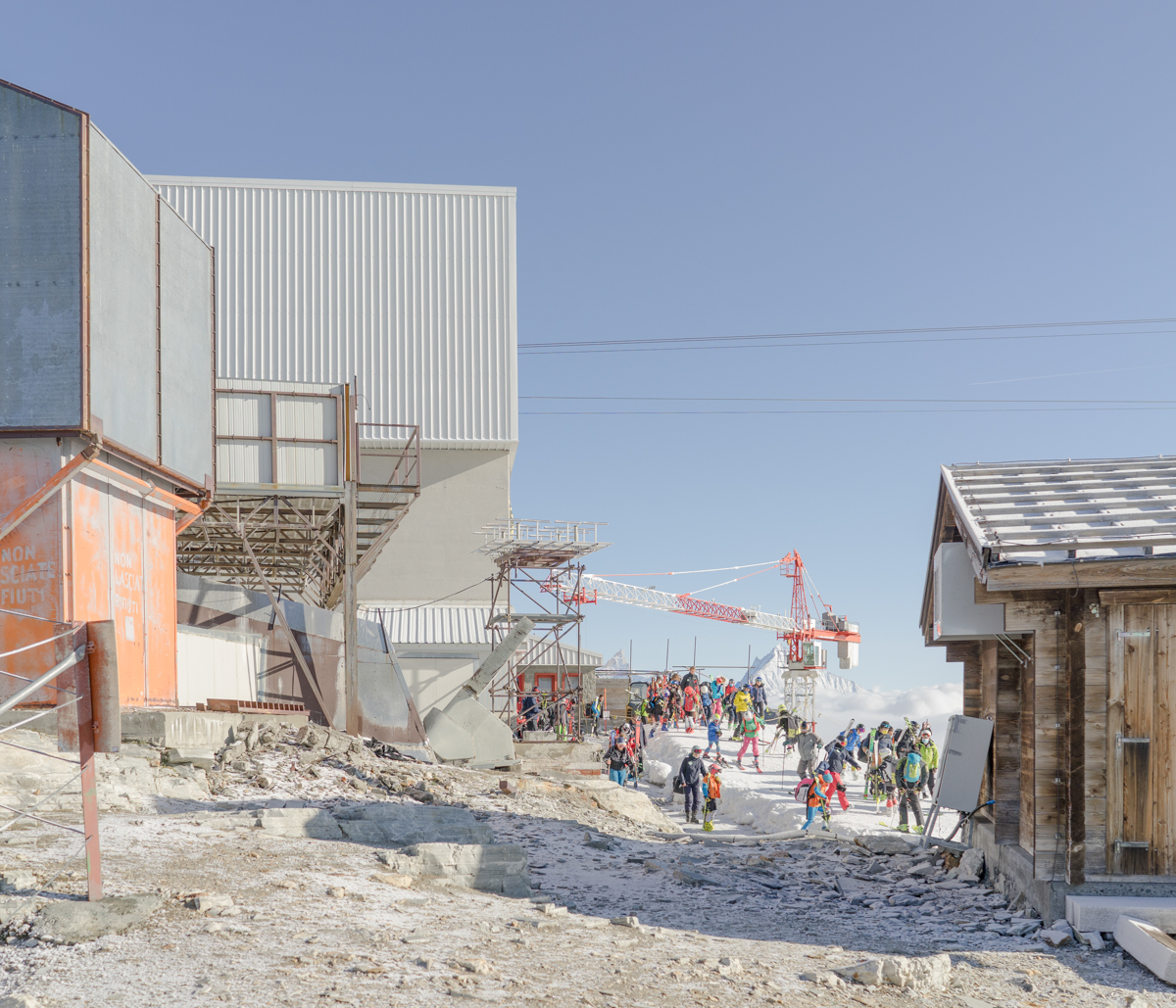 The Matterhorn ski area near Zermatt (CH) and Breuil-Cervinia (I) is a summer ski area. Even in summer, when the weather conditions are good, skiers come to the glacier at Testa Grigia. A place on the border that is usually relatively remote becomes a colorful site.
The Matterhorn ski area near Zermatt (CH) and Breuil-Cervinia (I) is a summer ski area. Even in summer, when the weather conditions are good, skiers come to the glacier at Testa Grigia. A place on the border that is usually relatively remote becomes a colorful site. 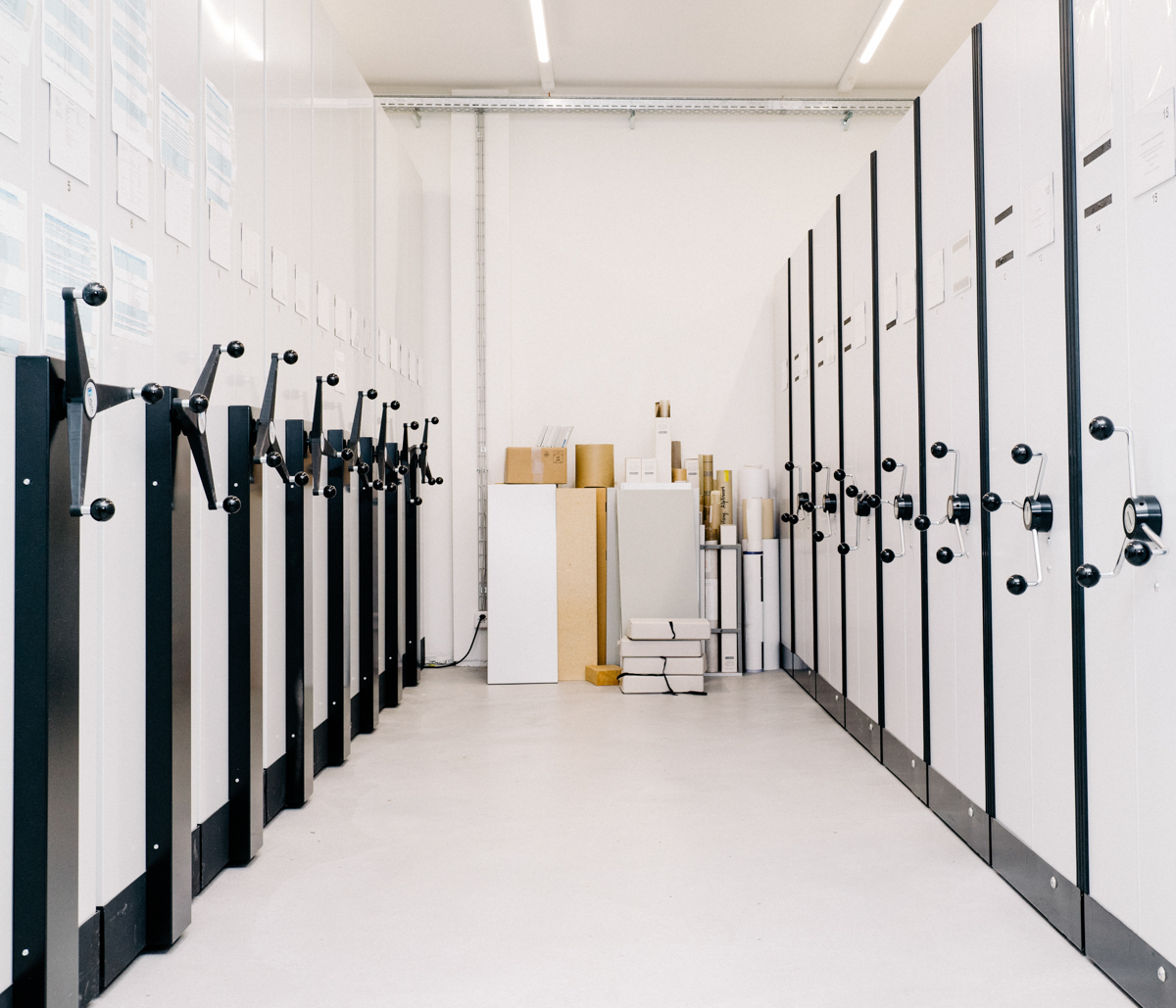 The historical documents on the Swiss national border and other geodata are stored at 18 degrees in the archive the Swiss Federal Office of Topography in Bern.
The historical documents on the Swiss national border and other geodata are stored at 18 degrees in the archive the Swiss Federal Office of Topography in Bern. 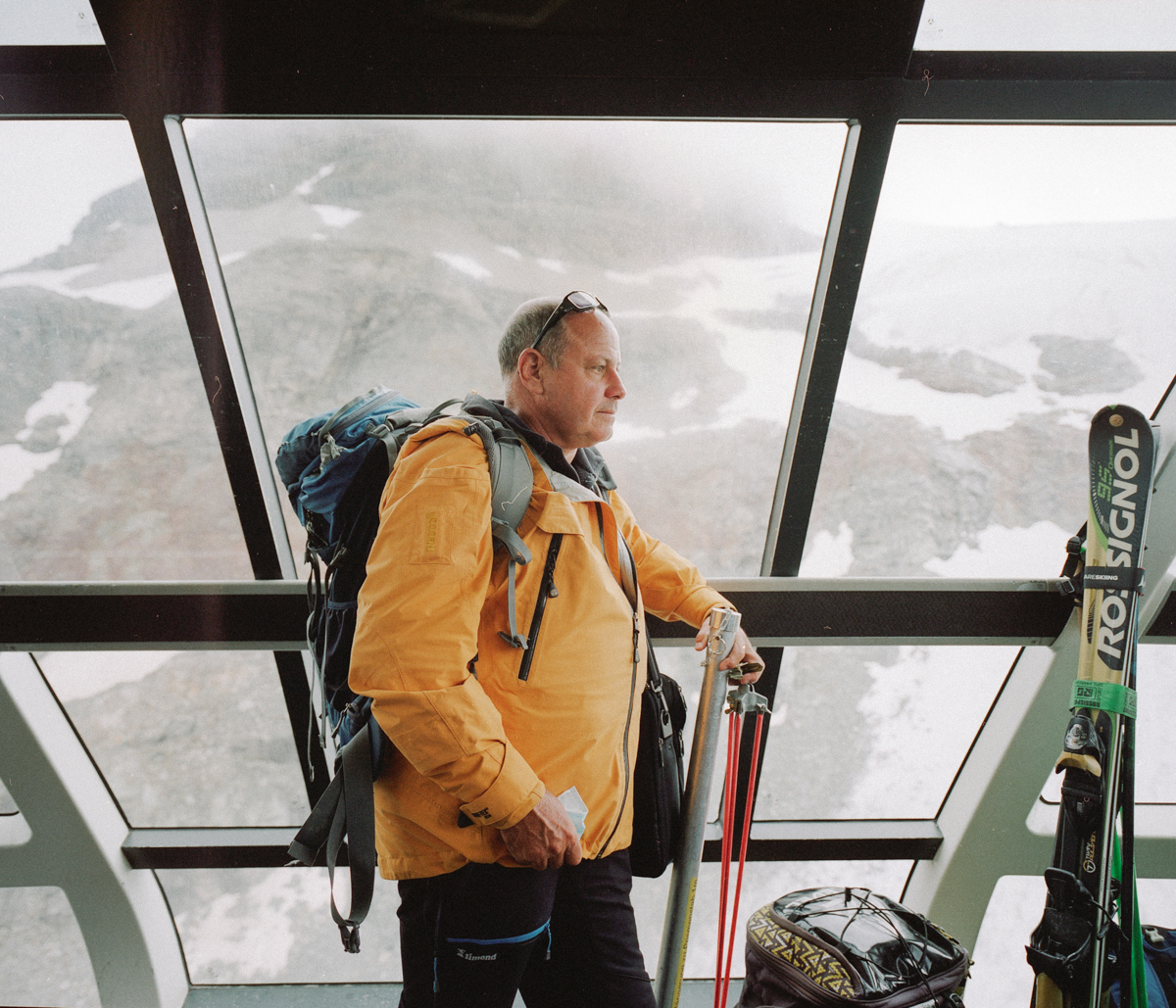 Surveyor Alain Wicht (51) in a cable car on his way to the national border between Italy and Switzerland, which lies at an altitude of almost 3500 m in the Alps.
Surveyor Alain Wicht (51) in a cable car on his way to the national border between Italy and Switzerland, which lies at an altitude of almost 3500 m in the Alps. 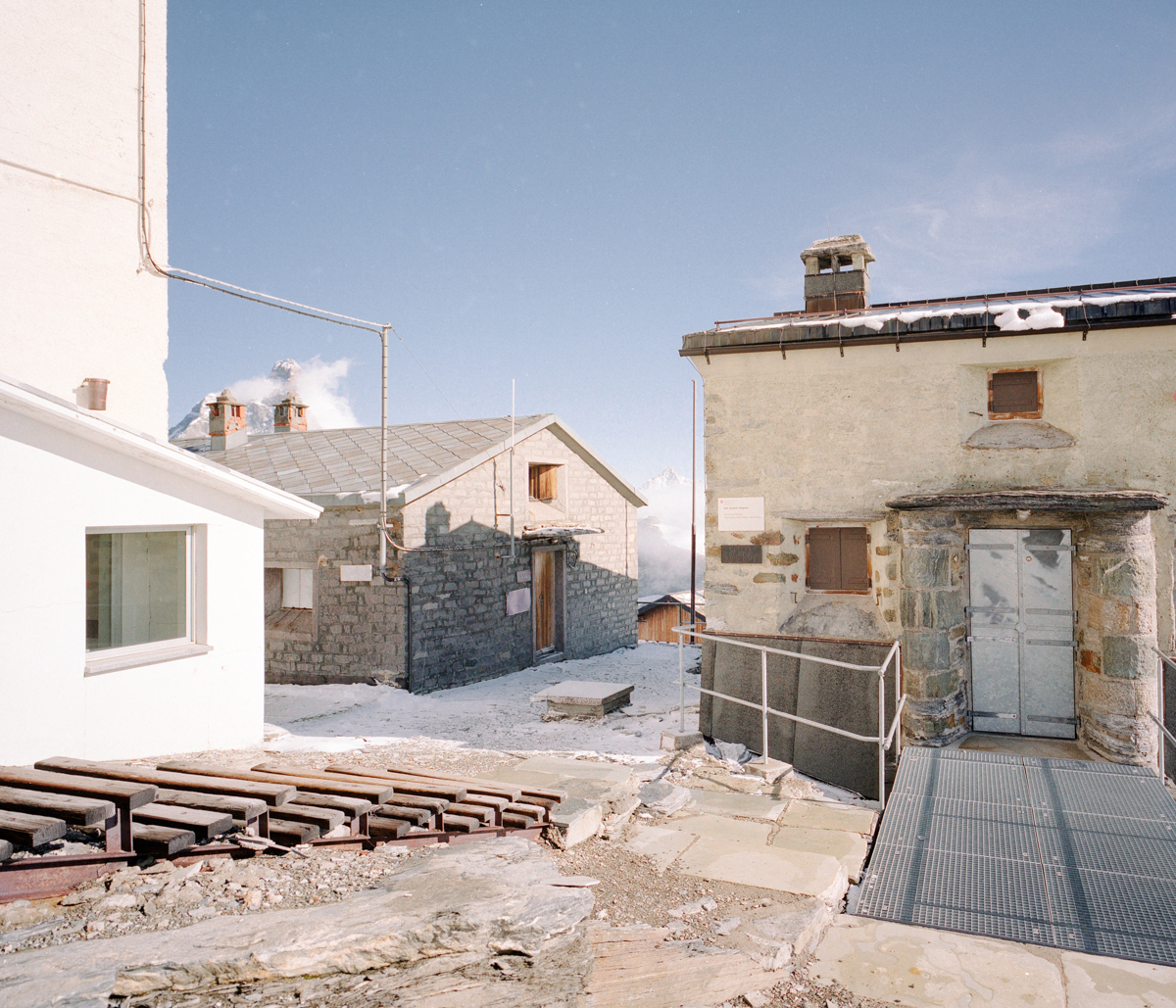 The border runs between the two checkpoints: the Italian "Guardia di Finanza" on the left and the Swiss Border Guard on the right.
The border runs between the two checkpoints: the Italian "Guardia di Finanza" on the left and the Swiss Border Guard on the right. 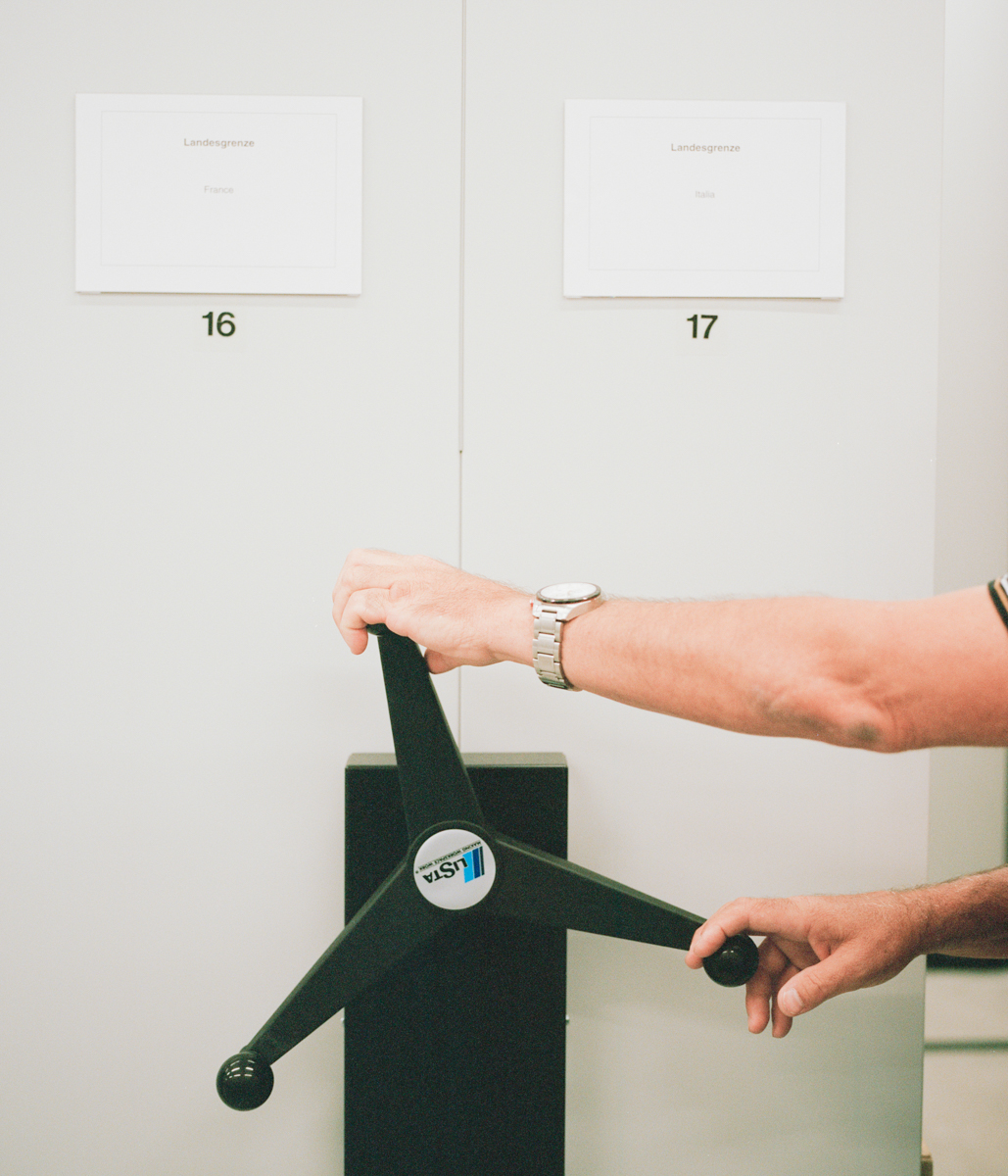 Alain Wicht (51) opens the archive of Swisstopo, the Swiss Federal Office of Topography, documenting the national border between Italy and Switzerland.
Alain Wicht (51) opens the archive of Swisstopo, the Swiss Federal Office of Topography, documenting the national border between Italy and Switzerland. 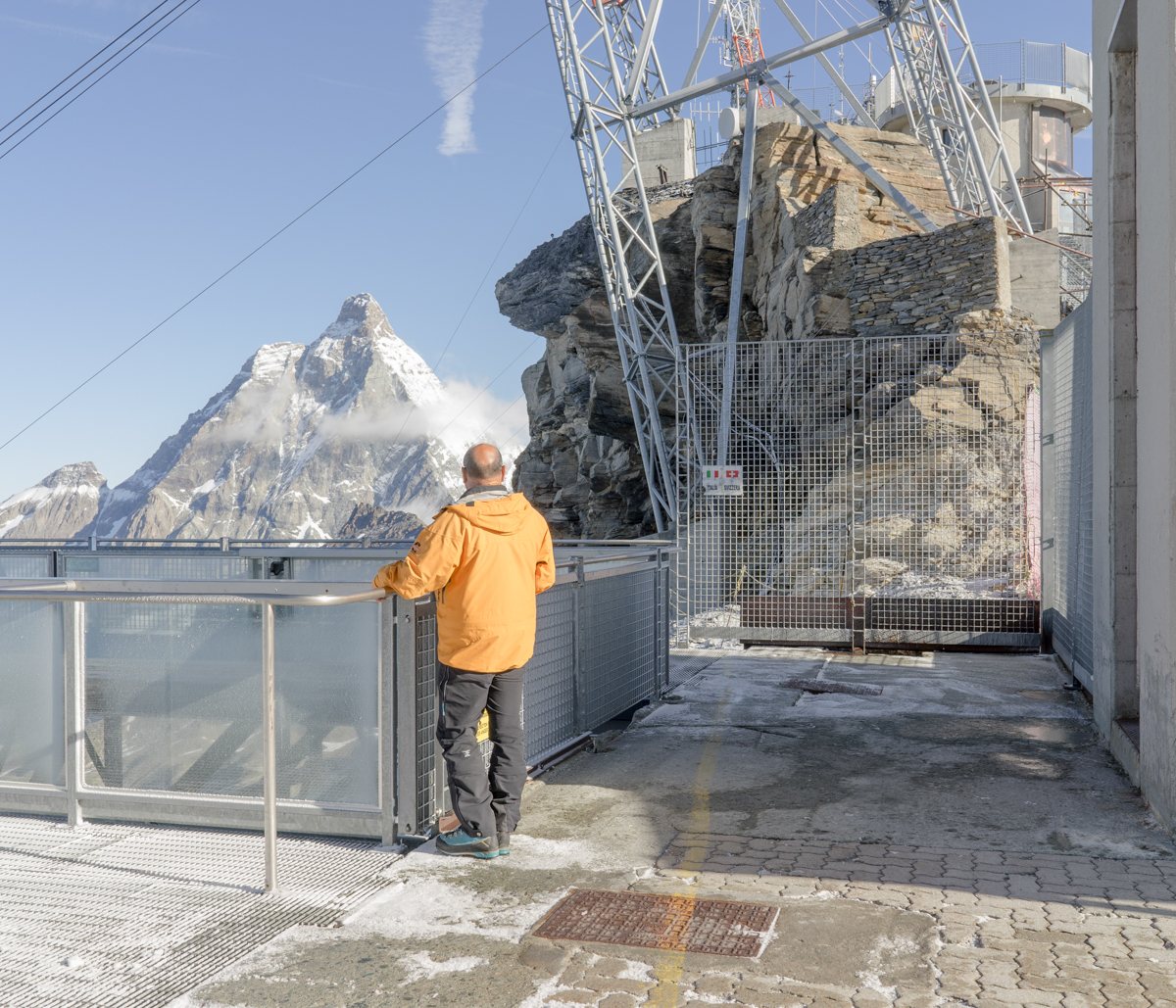 Surveyor Alain Wicht (51) on the Italian side of the border at the cable car sta?on on Testa Grigia, looking towards the Ma>erhorn. Along the yellow line on the ground runs the na?onal border of Italy (leL) and Switzerland (right).
Surveyor Alain Wicht (51) on the Italian side of the border at the cable car sta?on on Testa Grigia, looking towards the Ma>erhorn. Along the yellow line on the ground runs the na?onal border of Italy (leL) and Switzerland (right). 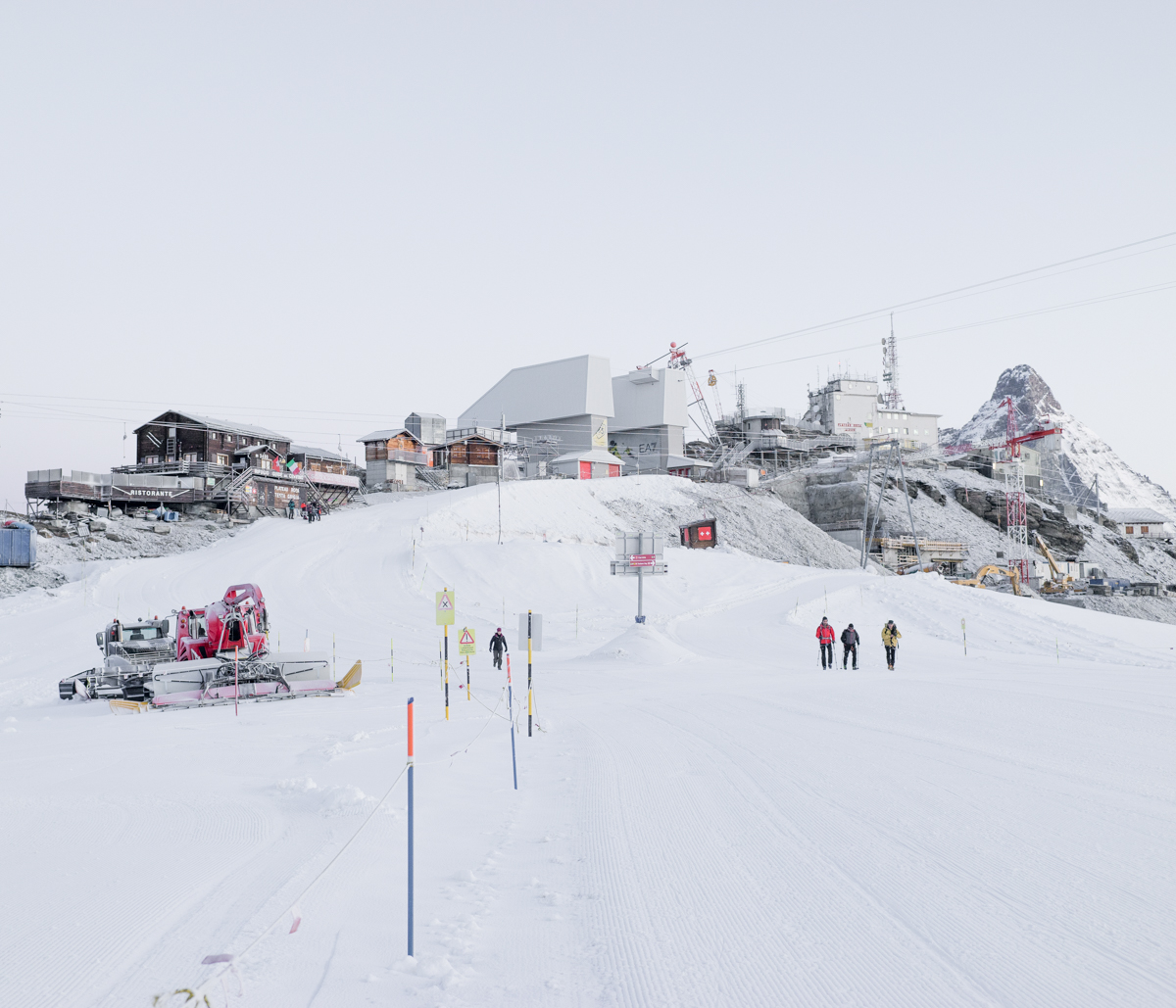 The border between Italy and Switzerland runs along the watershed on the Testa Grigia. There are (from leL to right) the "Rifugio Guide del Cervino," a substa?on, an old rail sta?on, the cable car sta?on to Cervinia, the new cable car sta?on to the Small Ma>erhorn, a weather sta?on, as well as the Italian checkpoint "Guardia di Finanza" (I) and the Swiss checkpoint (CH).
The border between Italy and Switzerland runs along the watershed on the Testa Grigia. There are (from leL to right) the "Rifugio Guide del Cervino," a substa?on, an old rail sta?on, the cable car sta?on to Cervinia, the new cable car sta?on to the Small Ma>erhorn, a weather sta?on, as well as the Italian checkpoint "Guardia di Finanza" (I) and the Swiss checkpoint (CH). 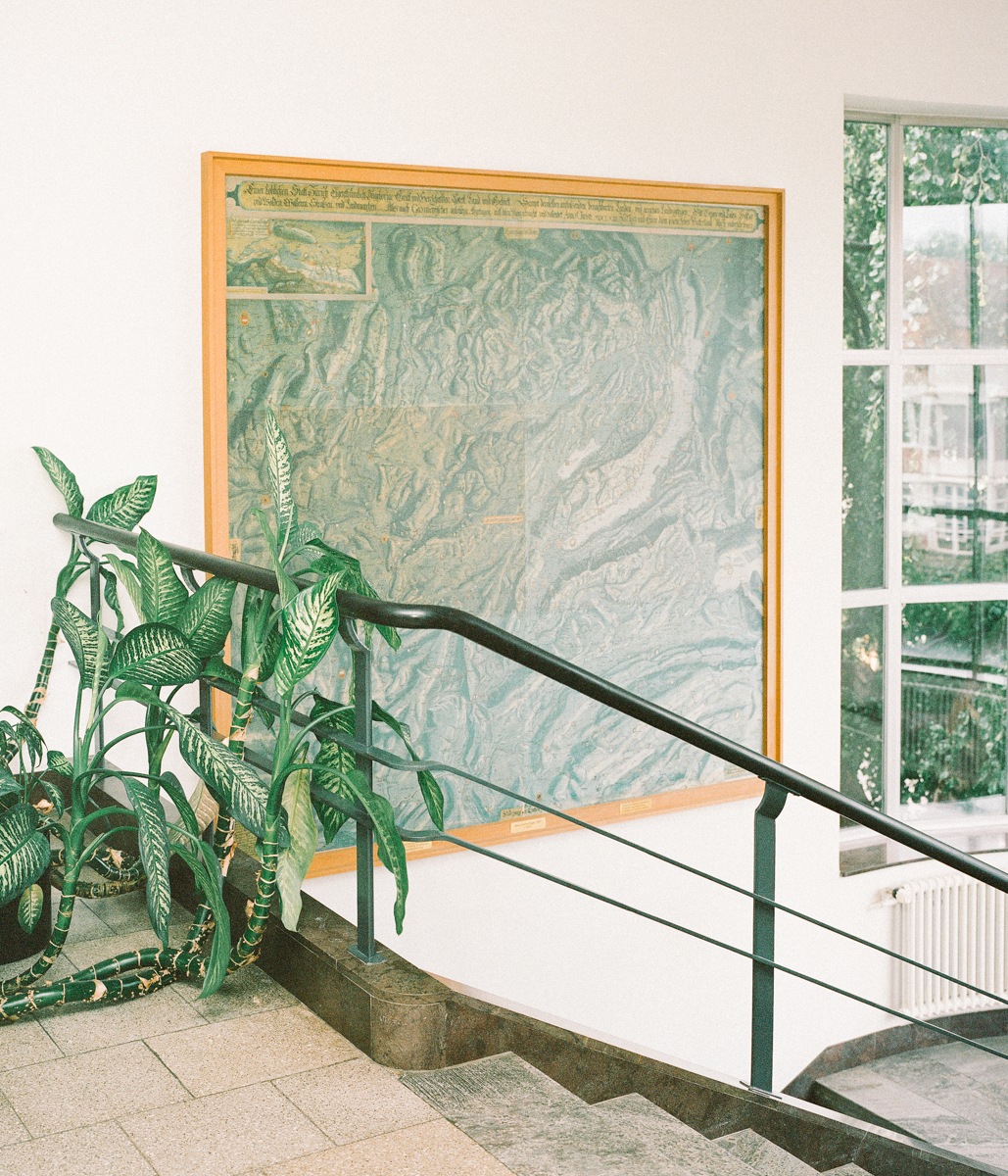 The "Züricher-Cantons-Carte" by Hans Konrad Gyger from 1667 hangs on the wall in the staircase of the Federal Office of Topography of Switzerland in Bern. Hans Conrad Gyger (1599-1674) made several maps on behalf of the Zurich government to show and document the territorial areas of the city-state. The map is also known under the title "Grosse Landtafel des Zürcher Gebiets", or simply as "Gyger map“.
The "Züricher-Cantons-Carte" by Hans Konrad Gyger from 1667 hangs on the wall in the staircase of the Federal Office of Topography of Switzerland in Bern. Hans Conrad Gyger (1599-1674) made several maps on behalf of the Zurich government to show and document the territorial areas of the city-state. The map is also known under the title "Grosse Landtafel des Zürcher Gebiets", or simply as "Gyger map“. 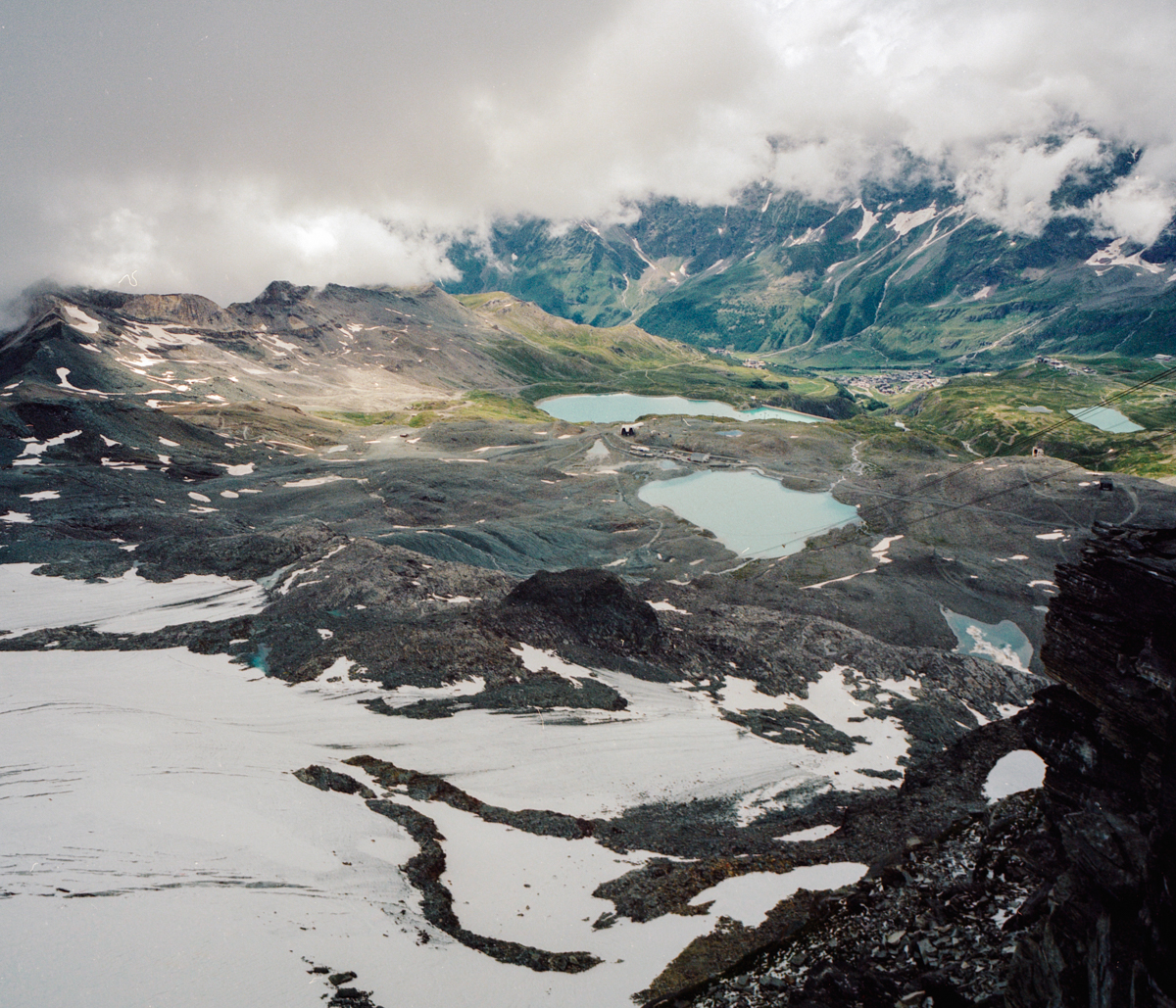 Panoramic view from Testa Grigia down to Cervinia in Italy. Cervinia means something similar to "at the Matterhorn" (Cervino).
Panoramic view from Testa Grigia down to Cervinia in Italy. Cervinia means something similar to "at the Matterhorn" (Cervino). 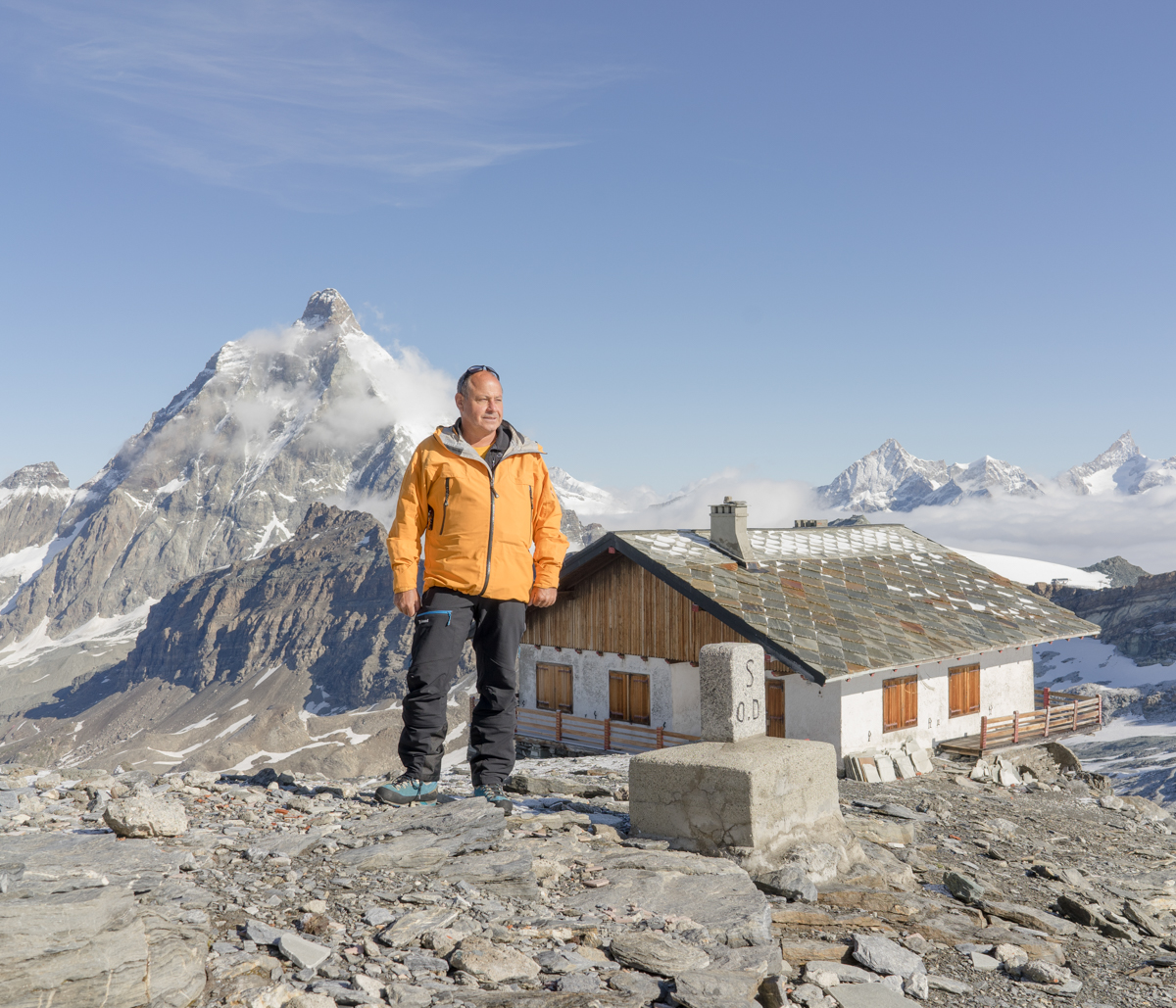 Alain Wicht (51), Officer for the Swiss National Border at the Federal Office of Topography "Swisstopo," at the Swiss-Italian border on the Testa Grigia at 3500 m altitude in the Alps. The mountain hut "Villa Lora Totino" and the Matterhorn are visible in the background.
Alain Wicht (51), Officer for the Swiss National Border at the Federal Office of Topography "Swisstopo," at the Swiss-Italian border on the Testa Grigia at 3500 m altitude in the Alps. The mountain hut "Villa Lora Totino" and the Matterhorn are visible in the background. 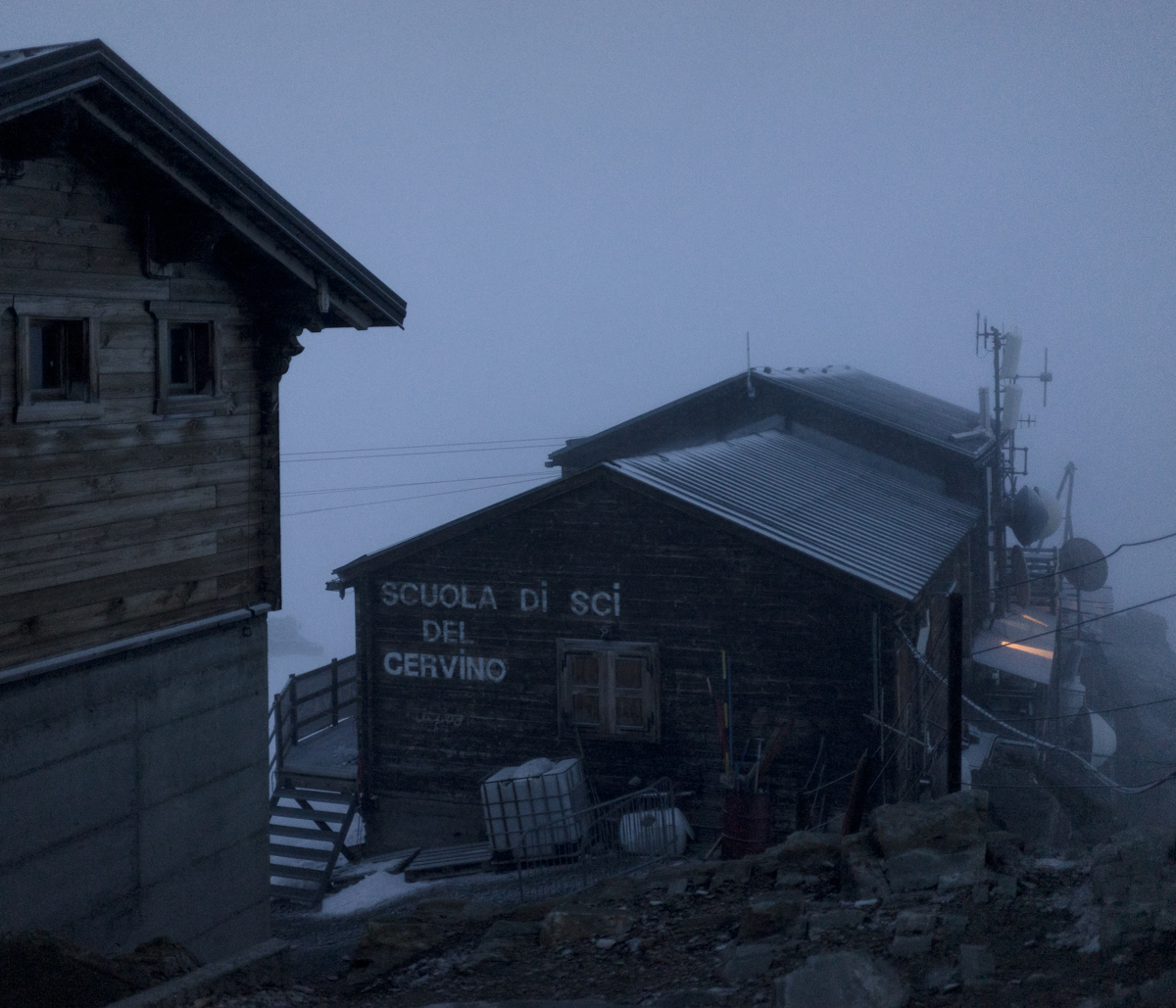 The "Refugio Guide del Cervino" at nightfall. The last landmark is located on the cliff above the hut. After this point, the border between Italy and Switzerland is only described in words (watershed) and is no longer clearly defined.
The "Refugio Guide del Cervino" at nightfall. The last landmark is located on the cliff above the hut. After this point, the border between Italy and Switzerland is only described in words (watershed) and is no longer clearly defined. 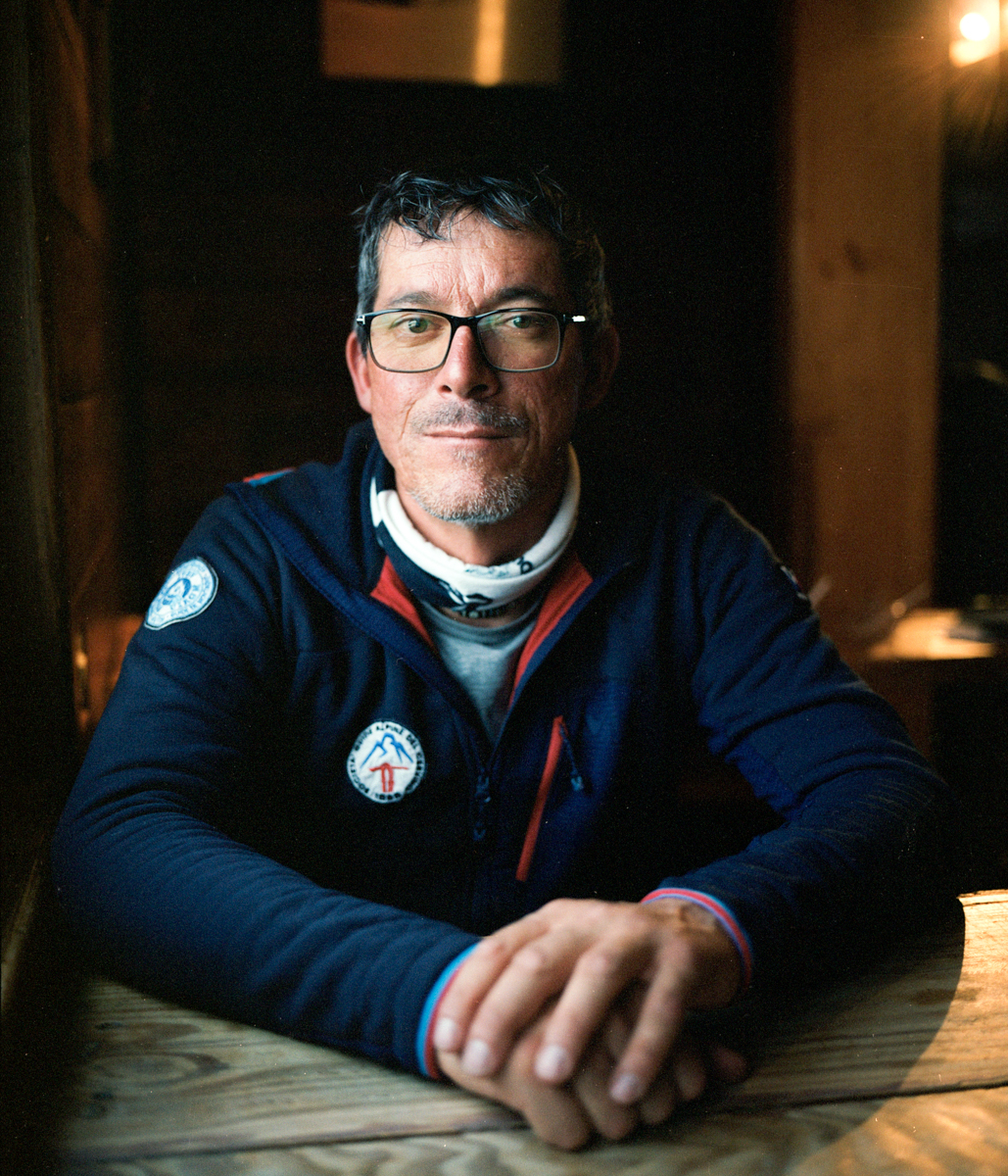 Hut owner and mountain guide Lucio Trucco (50) has been running the "Refugio Guide del Cervino" on Testa Grigia for five years. In terms of advertising, it would be an advantage for him if the border would run through his hut in future and the two countries of Italy and Switzerland could meet at the same table.
Hut owner and mountain guide Lucio Trucco (50) has been running the "Refugio Guide del Cervino" on Testa Grigia for five years. In terms of advertising, it would be an advantage for him if the border would run through his hut in future and the two countries of Italy and Switzerland could meet at the same table. 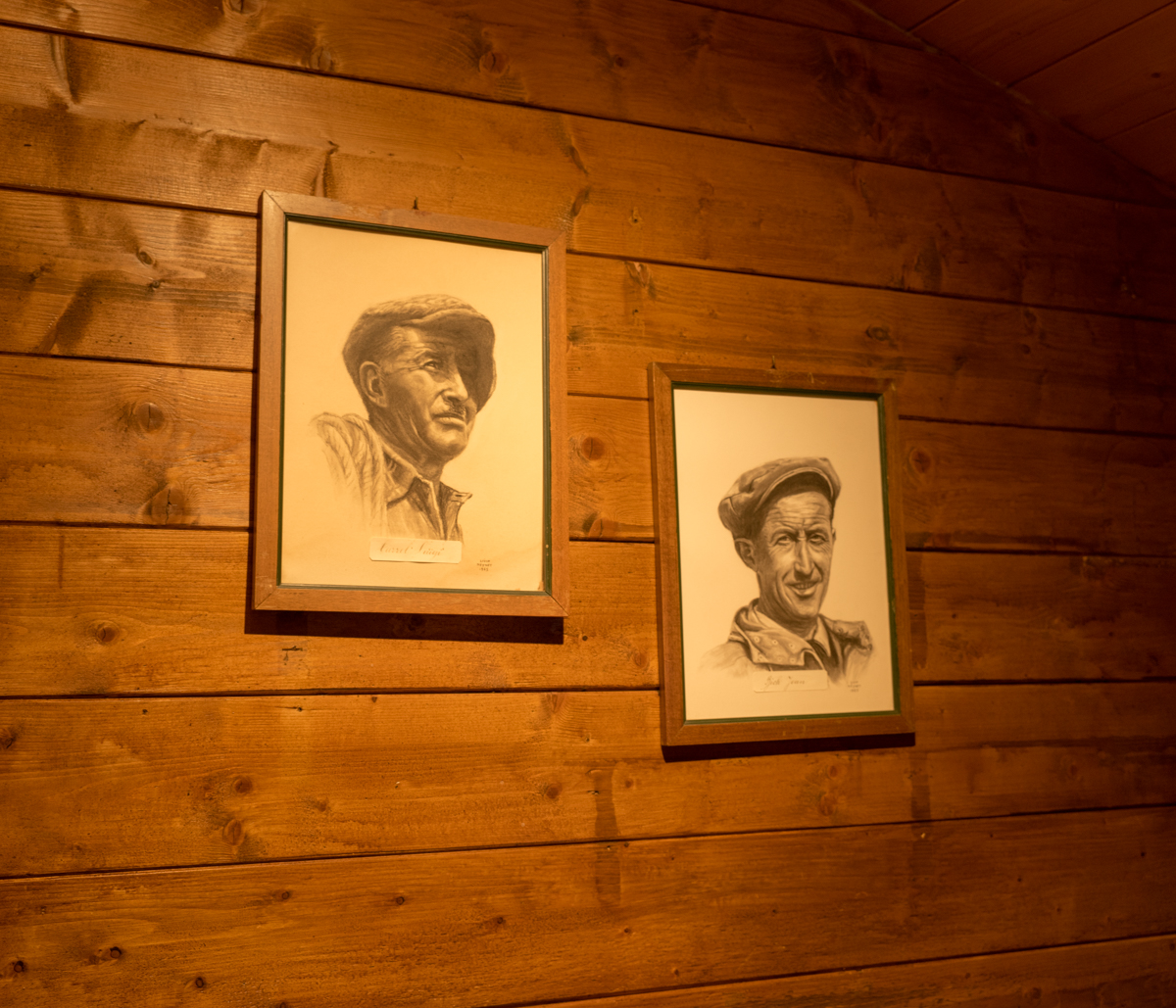 Two drawings of former mountain guides serve as decora?on in the mountain hut "Refugio Guide del Cervino." Lucio Trucco, the host of the refuge and mountain guide, already had himself drawn to be included in the series.
Two drawings of former mountain guides serve as decora?on in the mountain hut "Refugio Guide del Cervino." Lucio Trucco, the host of the refuge and mountain guide, already had himself drawn to be included in the series. 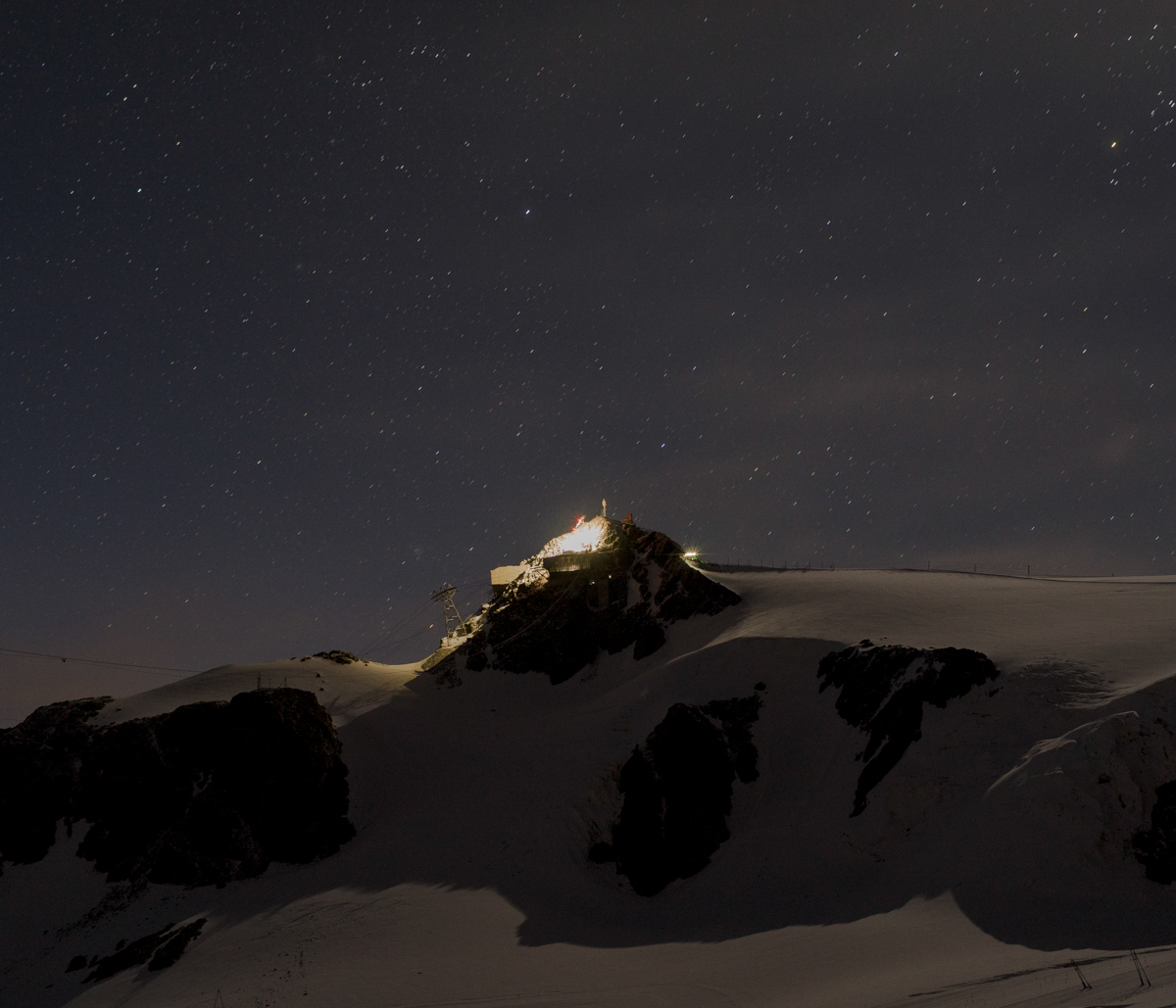 View from the Italian alpine hut "Rifugio Guide del Cervino" to the Small Ma>erhorn at night. Early in the morning, the first climbers set off for other peaks, such as the Breithorn.
View from the Italian alpine hut "Rifugio Guide del Cervino" to the Small Ma>erhorn at night. Early in the morning, the first climbers set off for other peaks, such as the Breithorn. 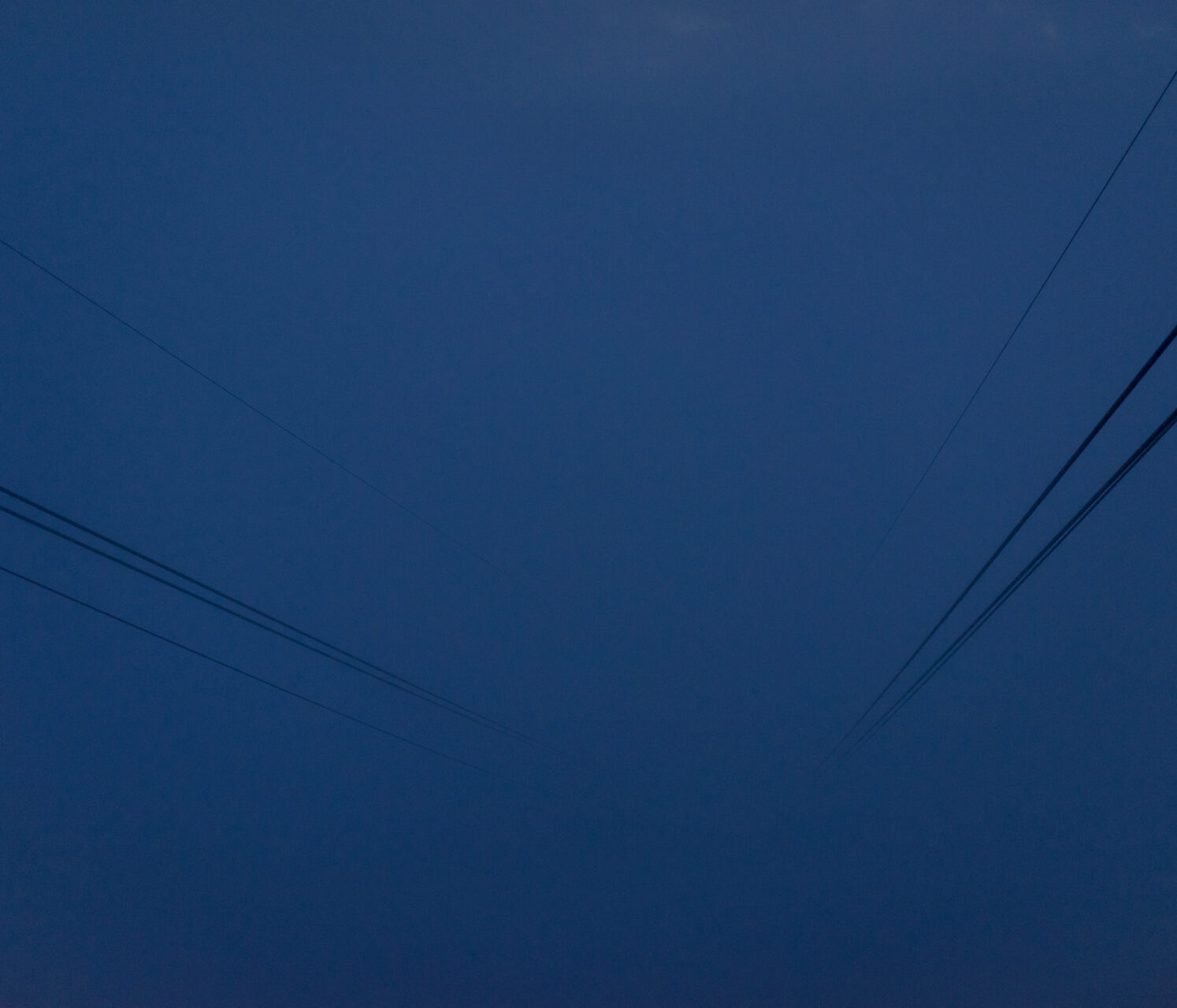 The cable car leading from Cervinia to Testa Grigia (3479) disappears in the dark. The border up here in the Alps is undefined and bizarre.
The cable car leading from Cervinia to Testa Grigia (3479) disappears in the dark. The border up here in the Alps is undefined and bizarre. 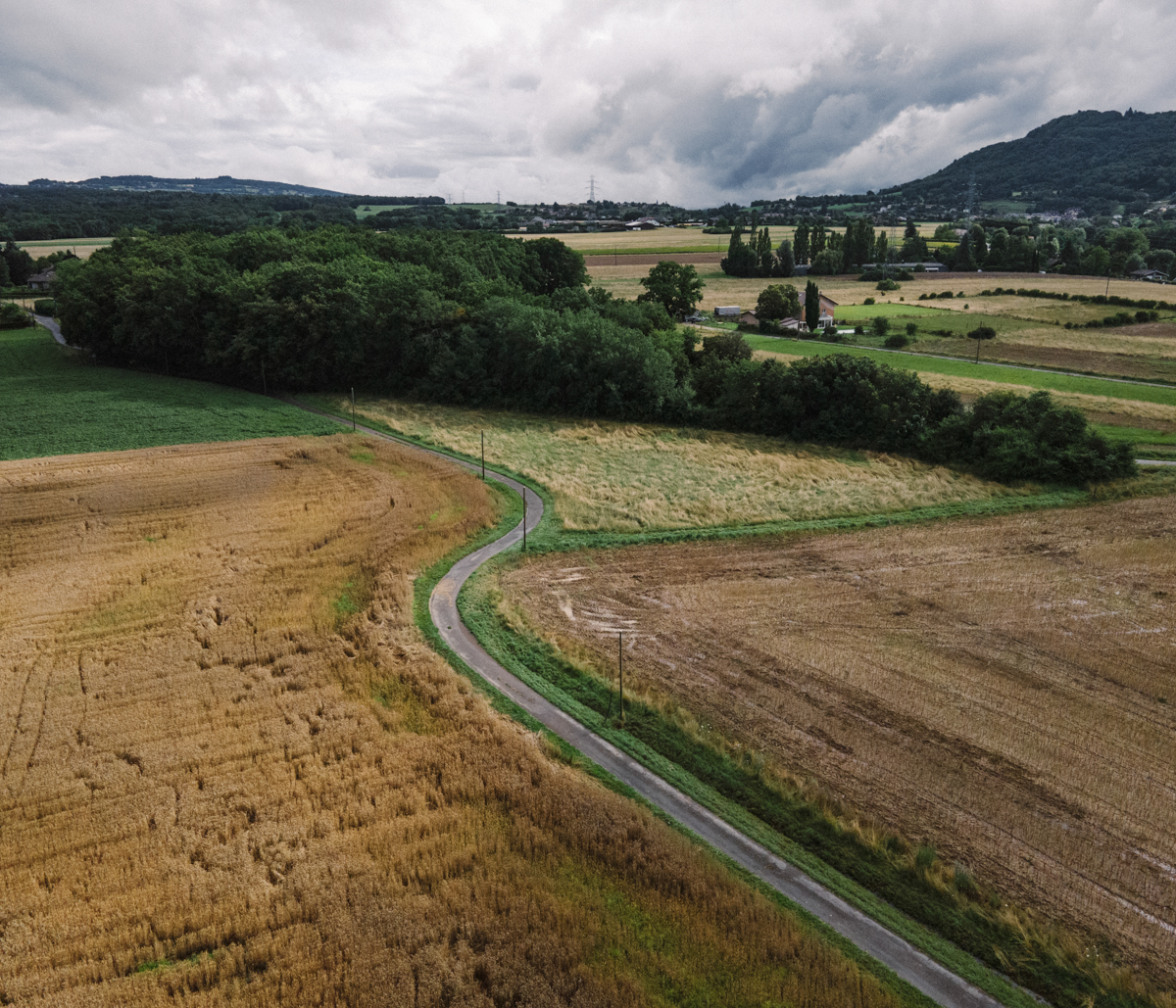 View on the leased land of farmer Yves Liechti (51, Jussy near Geneva) for agricultural biodiversity. The current border between France and Switzerland runs through the forest behind the farmland. It is to be built along the path in the foreground in the future.
View on the leased land of farmer Yves Liechti (51, Jussy near Geneva) for agricultural biodiversity. The current border between France and Switzerland runs through the forest behind the farmland. It is to be built along the path in the foreground in the future. 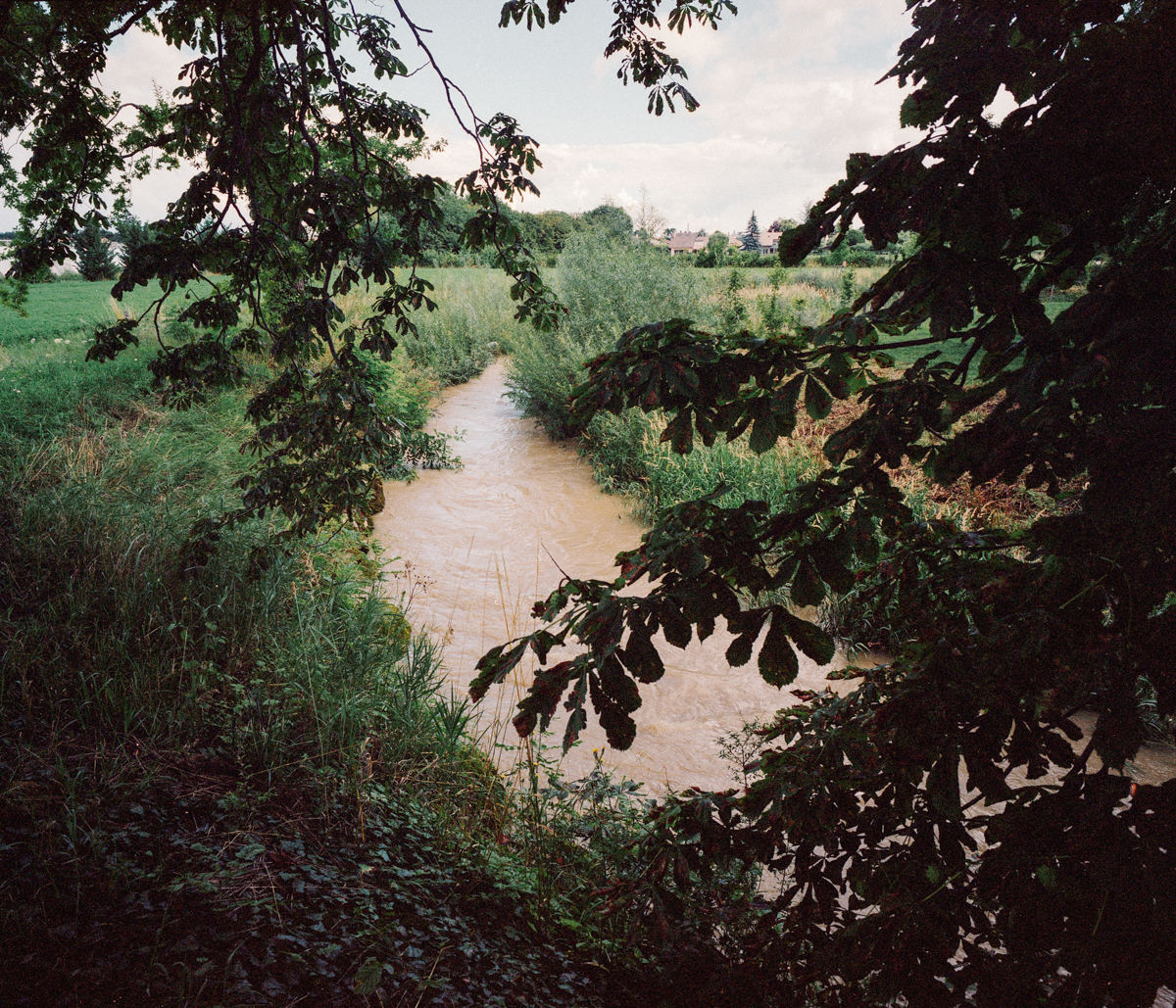 Due to the renaturation of the border river "Foron" between Switzerland (left) and France (right), the border is shifting. To equalize the land areas, farmer Yves Liechti (51, Jussy near Geneva) has to hand over part of his Swiss land to France.
Due to the renaturation of the border river "Foron" between Switzerland (left) and France (right), the border is shifting. To equalize the land areas, farmer Yves Liechti (51, Jussy near Geneva) has to hand over part of his Swiss land to France. 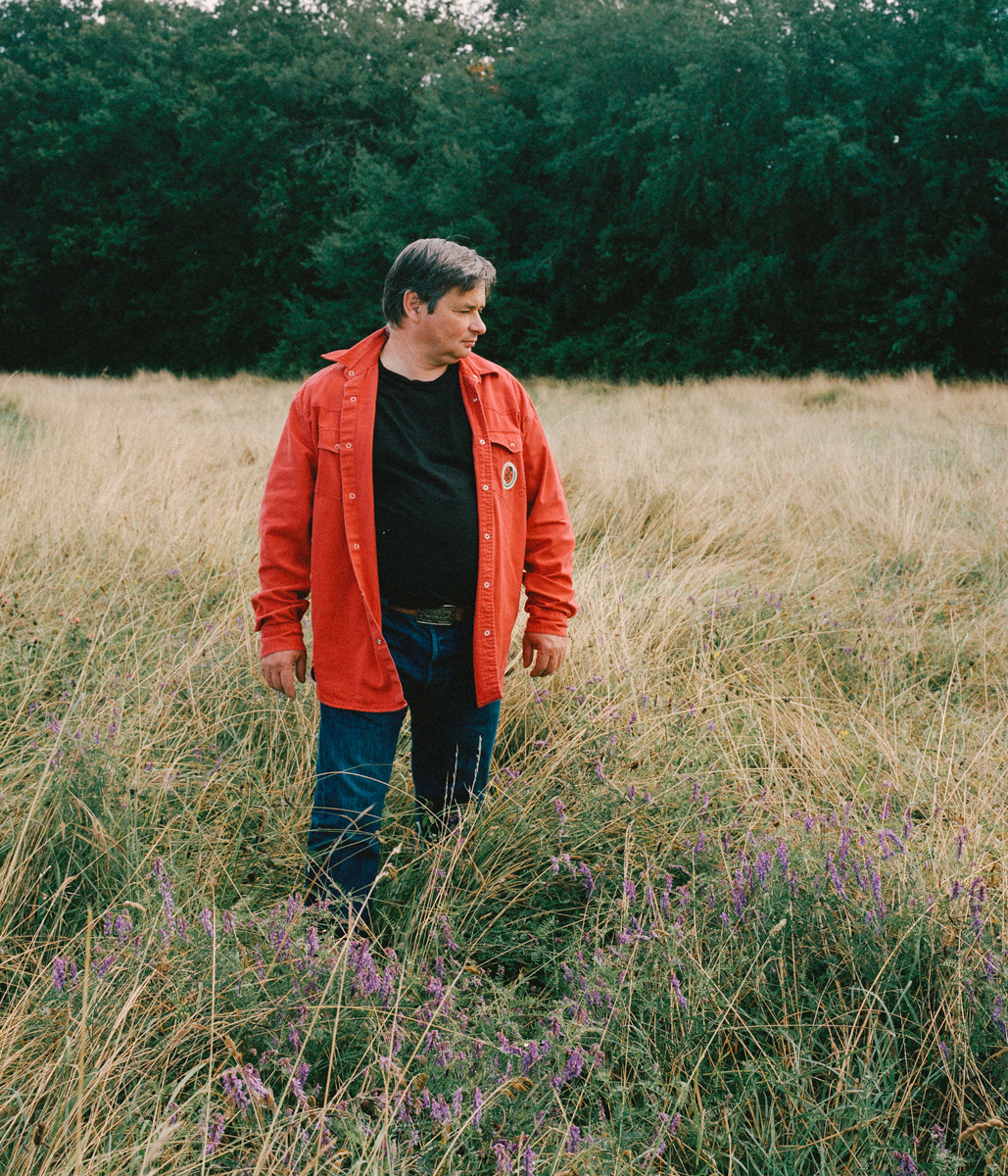 Farmer Yves Liechti (51, Jussy near Geneva) on his Swiss farmland, which will be located in France in the future due to a border shift as a result of a land exchange between France and Switzerland. Since the Swiss farmer does not receive any direct payments in France, the area no longer benefits him. If he wants to cut it, he has to go through administrative effort to import the grass into Switzerland.
Farmer Yves Liechti (51, Jussy near Geneva) on his Swiss farmland, which will be located in France in the future due to a border shift as a result of a land exchange between France and Switzerland. Since the Swiss farmer does not receive any direct payments in France, the area no longer benefits him. If he wants to cut it, he has to go through administrative effort to import the grass into Switzerland. 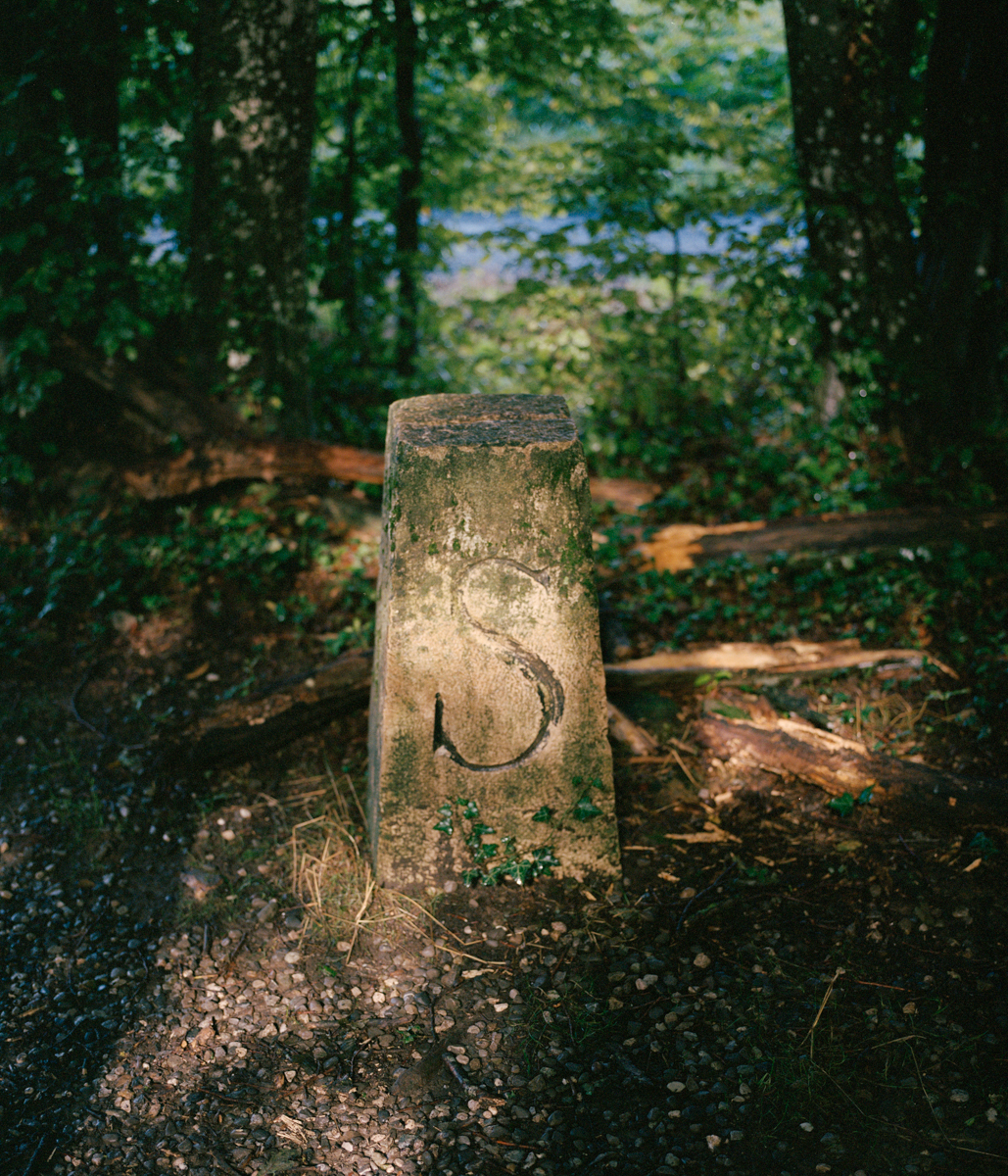 The "S" on the border stone between France and Switzerland does not stand for "Switzerland" but for "Sardinia" - the stone dates from the time when the French department of Haute-Savoie belonged to the Kingdom of Sardinia. The border is to be moved in the future because of an area compensation. Therefore new landmarks have to be set.
The "S" on the border stone between France and Switzerland does not stand for "Switzerland" but for "Sardinia" - the stone dates from the time when the French department of Haute-Savoie belonged to the Kingdom of Sardinia. The border is to be moved in the future because of an area compensation. Therefore new landmarks have to be set. 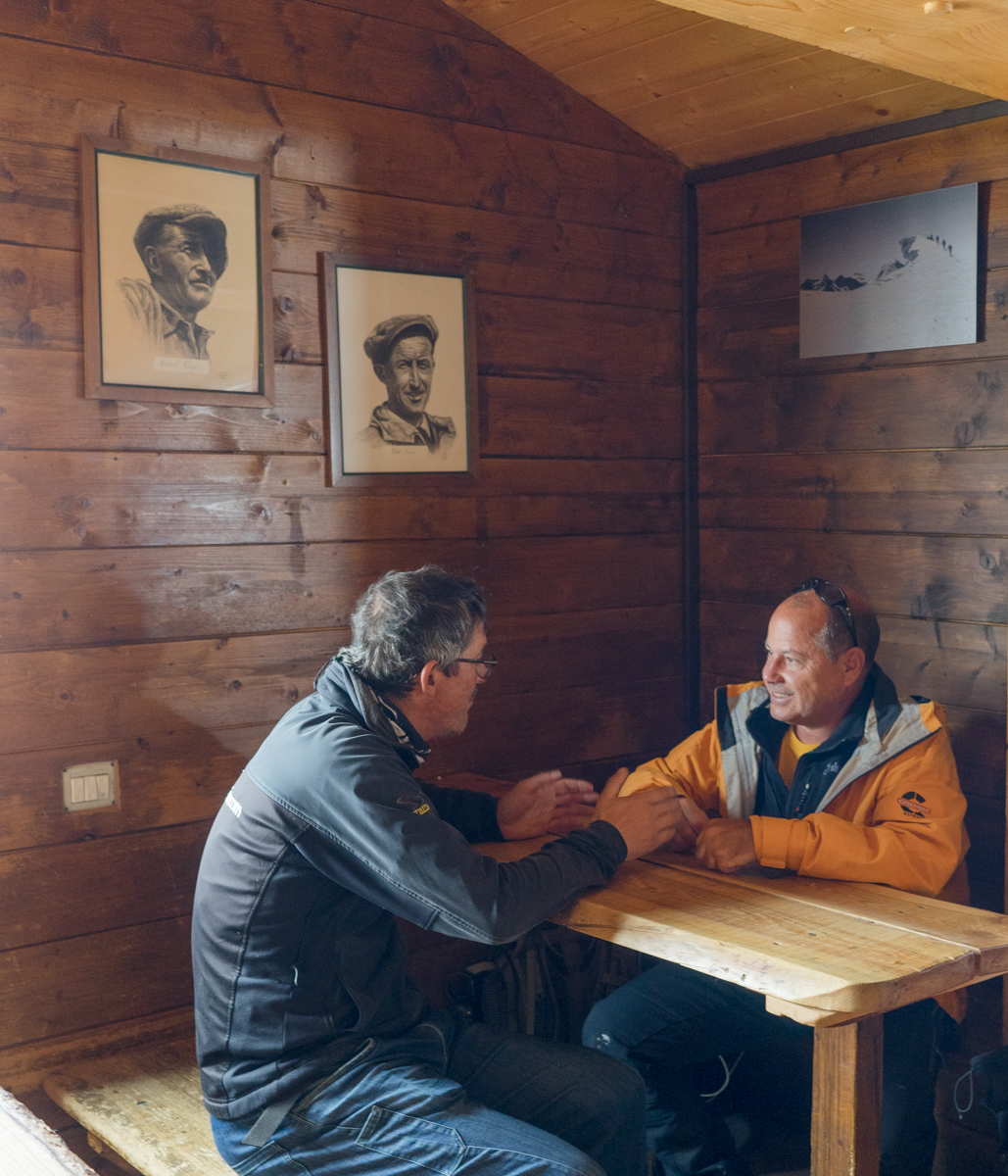 Mountain hut owner Lucio Trucco (50) and measurer Alain Wicht (51) discuss the future of the national border between Switzerland and Italy at a table in the Refugio Guide del Cervino. The two have known each other for years, but they have different opinions about how the undefined border should run in the future.
Mountain hut owner Lucio Trucco (50) and measurer Alain Wicht (51) discuss the future of the national border between Switzerland and Italy at a table in the Refugio Guide del Cervino. The two have known each other for years, but they have different opinions about how the undefined border should run in the future. 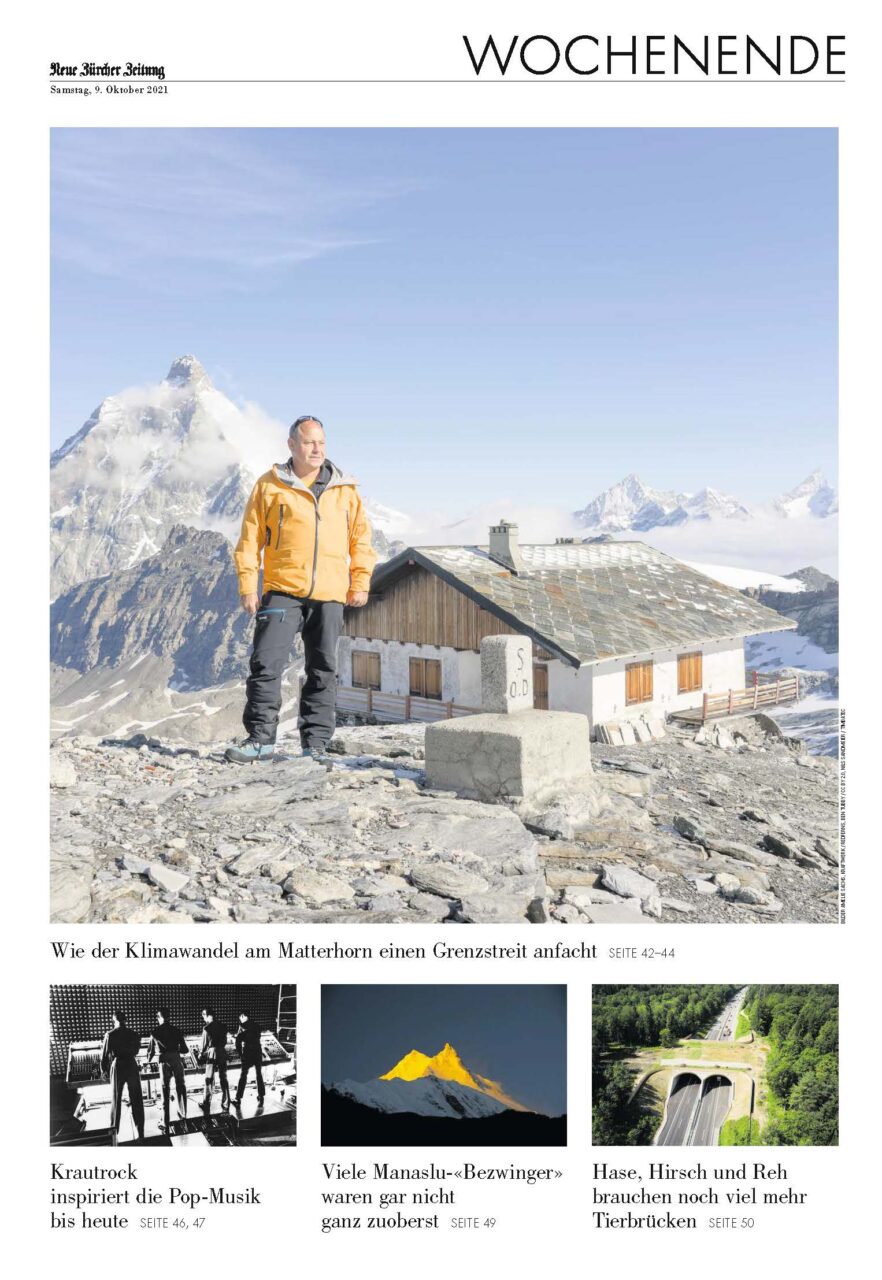 The story „Not set in stone“ was published in the Swiss Newspaper NZZ (@nzz) on 9 October 2021.
The story „Not set in stone“ was published in the Swiss Newspaper NZZ (@nzz) on 9 October 2021. 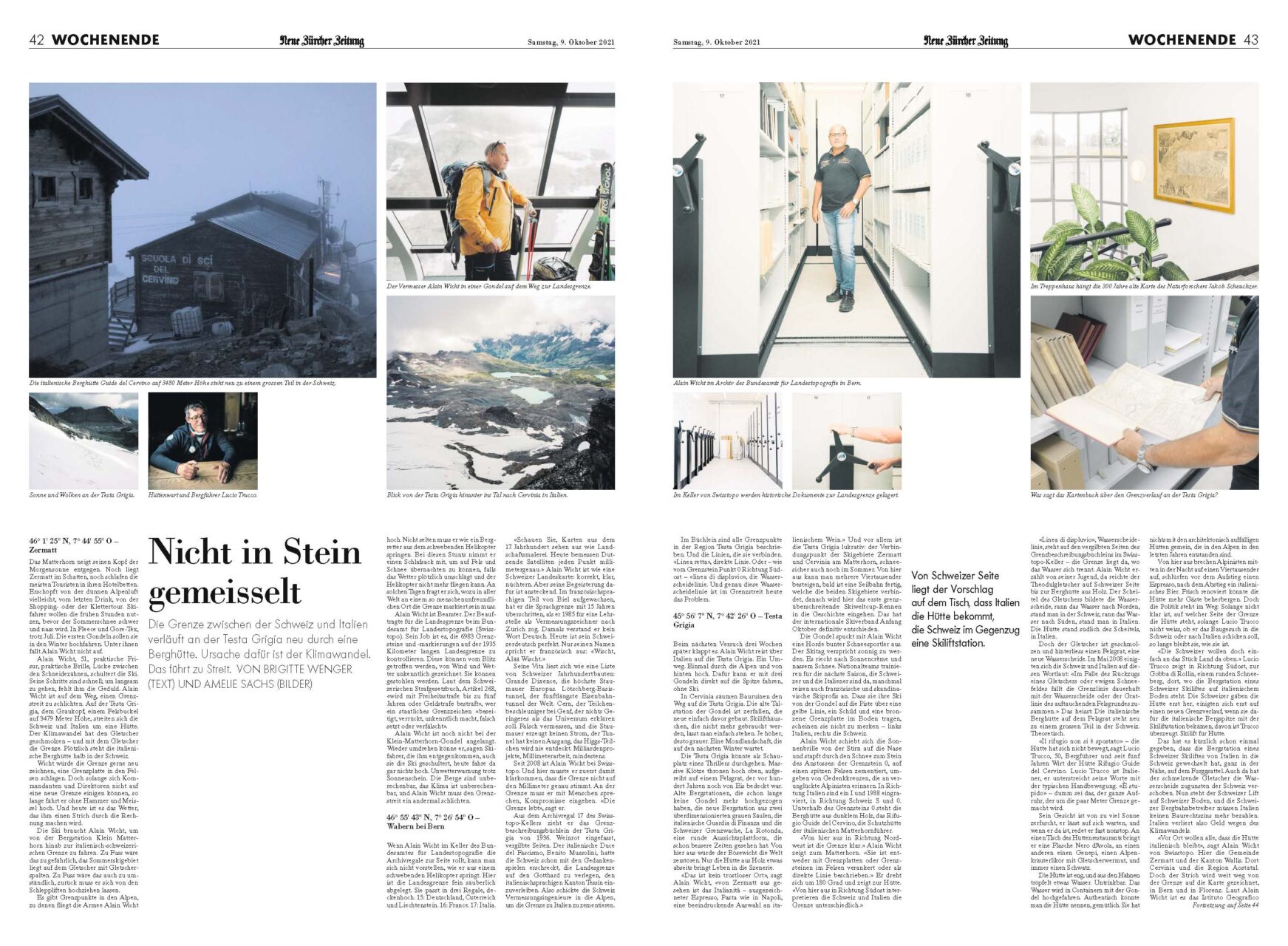
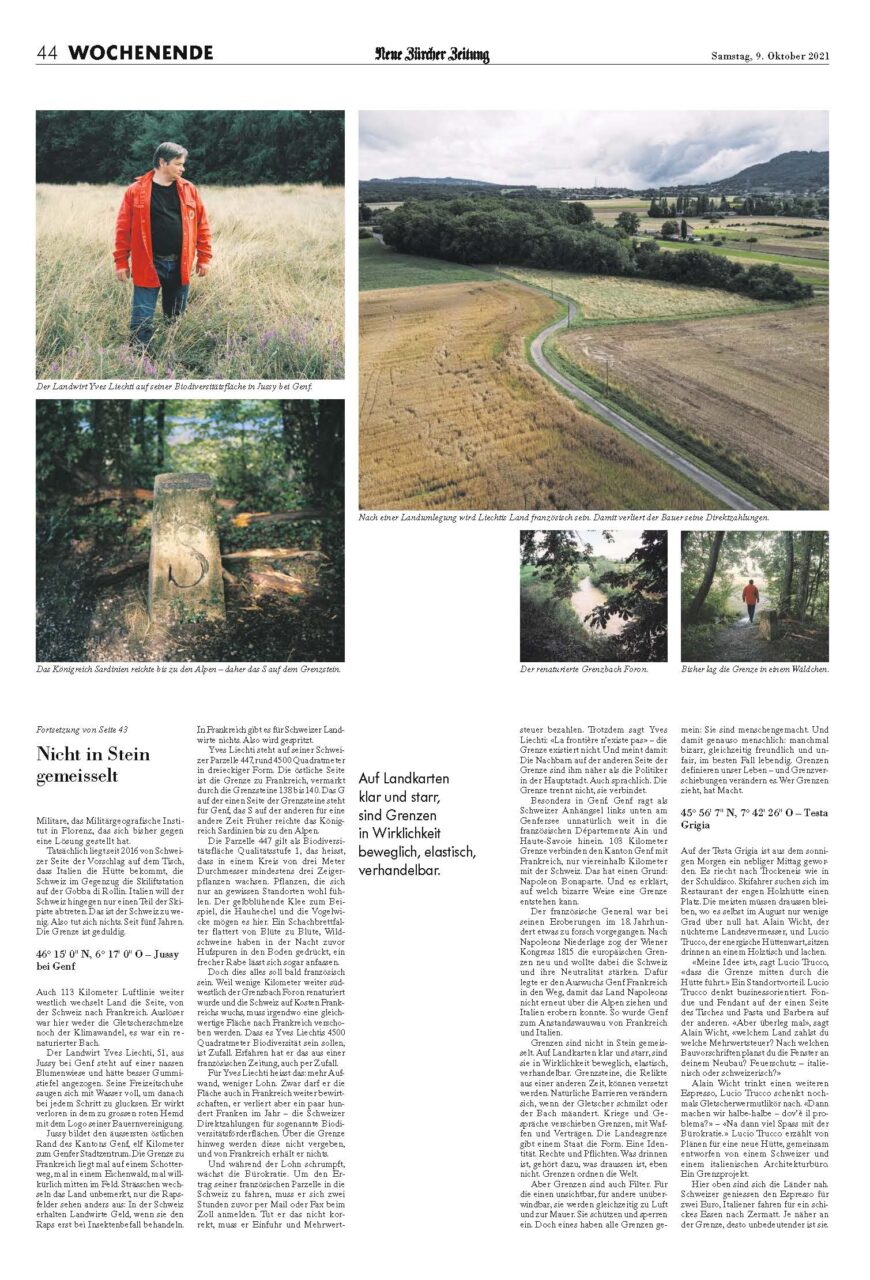
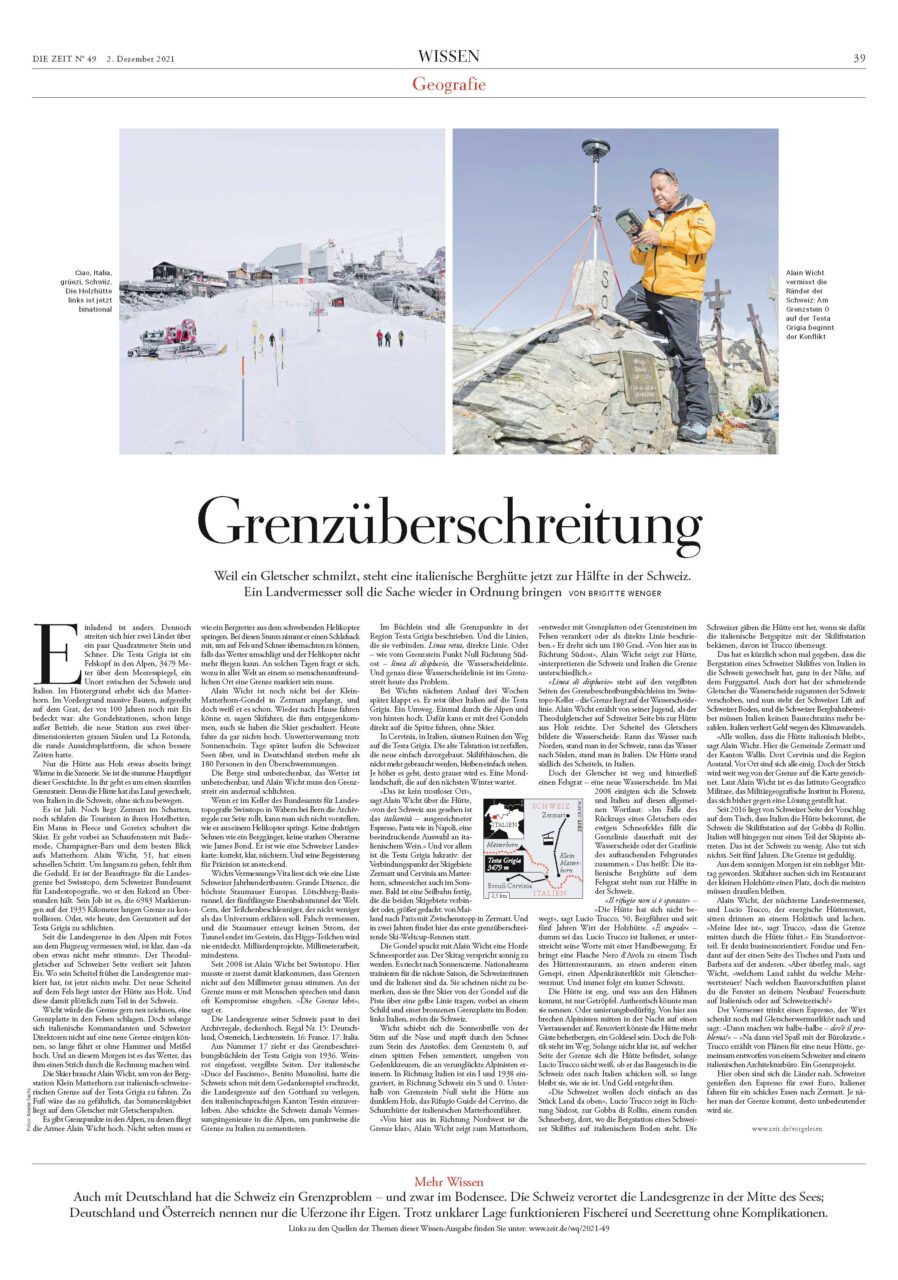 Published in ZEIT on Thursday, 2nd December, 2021
Published in ZEIT on Thursday, 2nd December, 2021 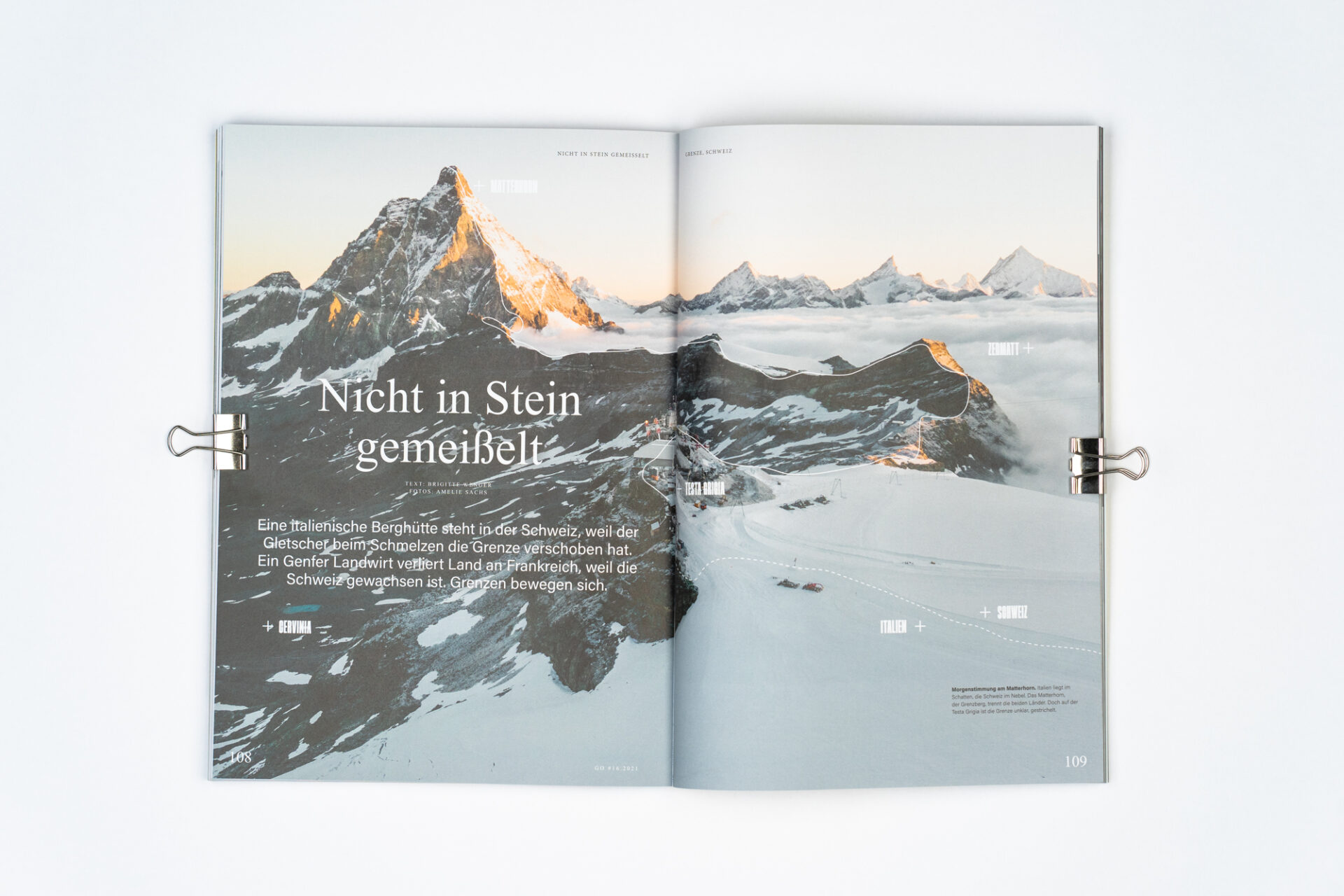 Published in Go Magazin 2021
Published in Go Magazin 2021 